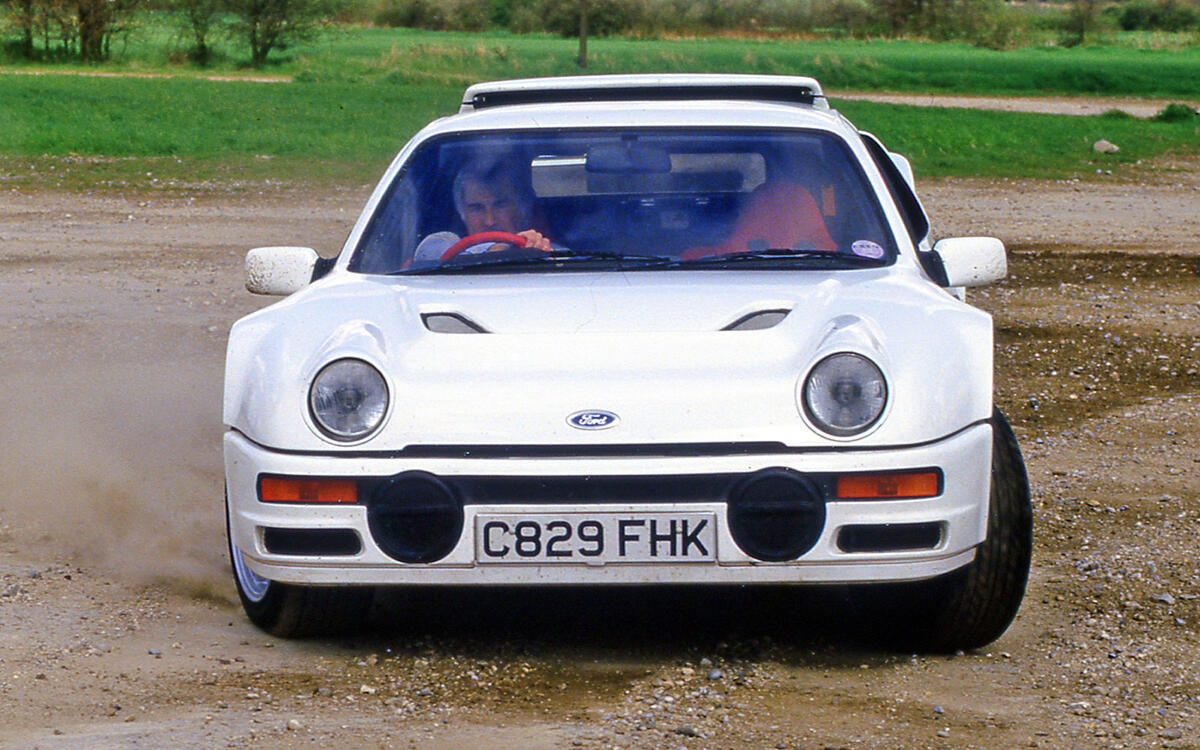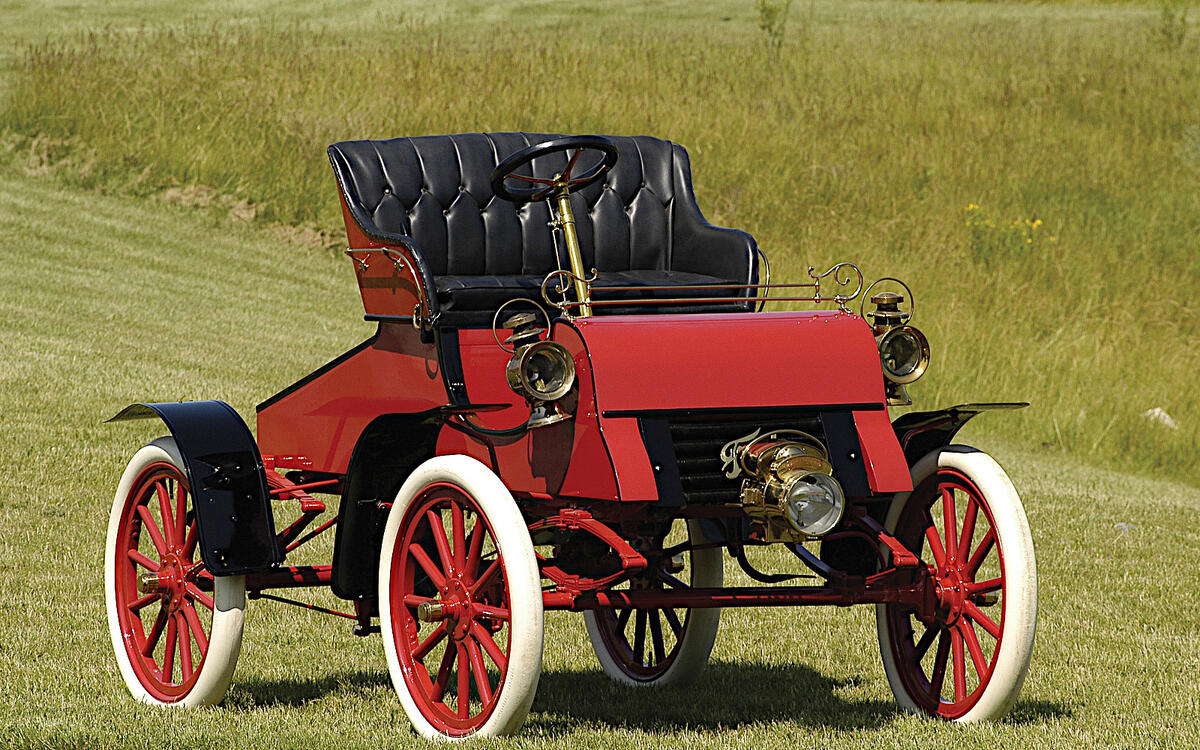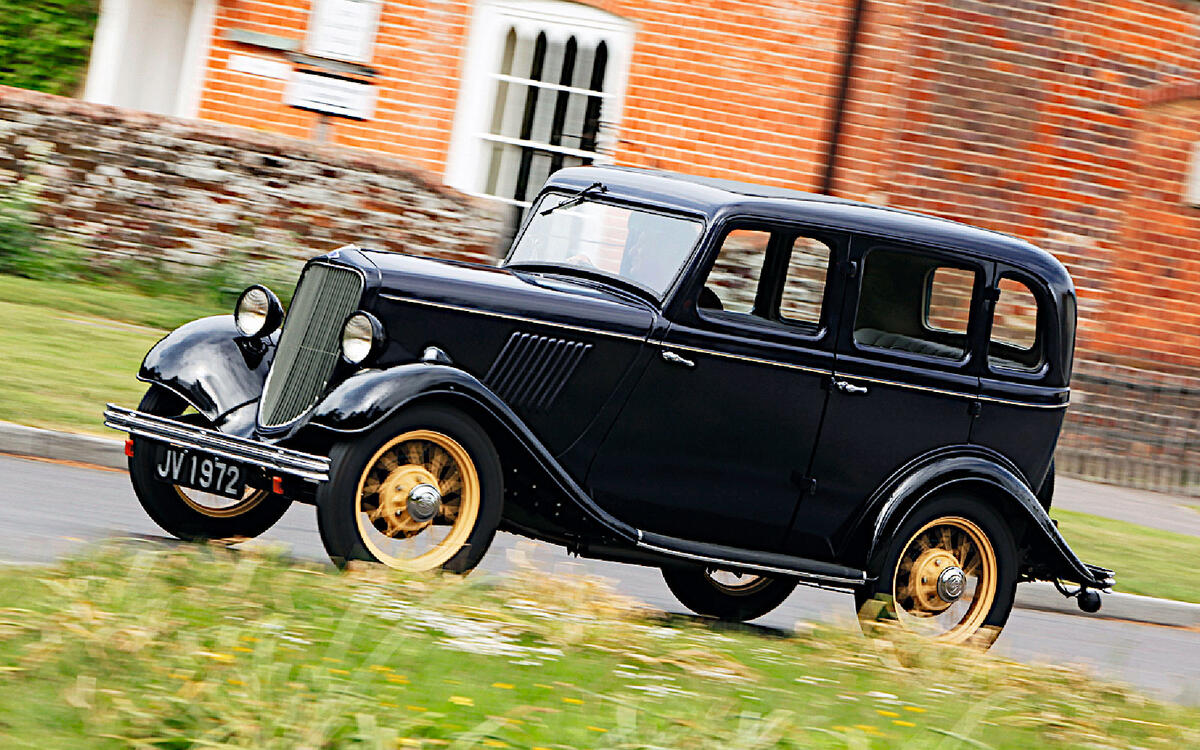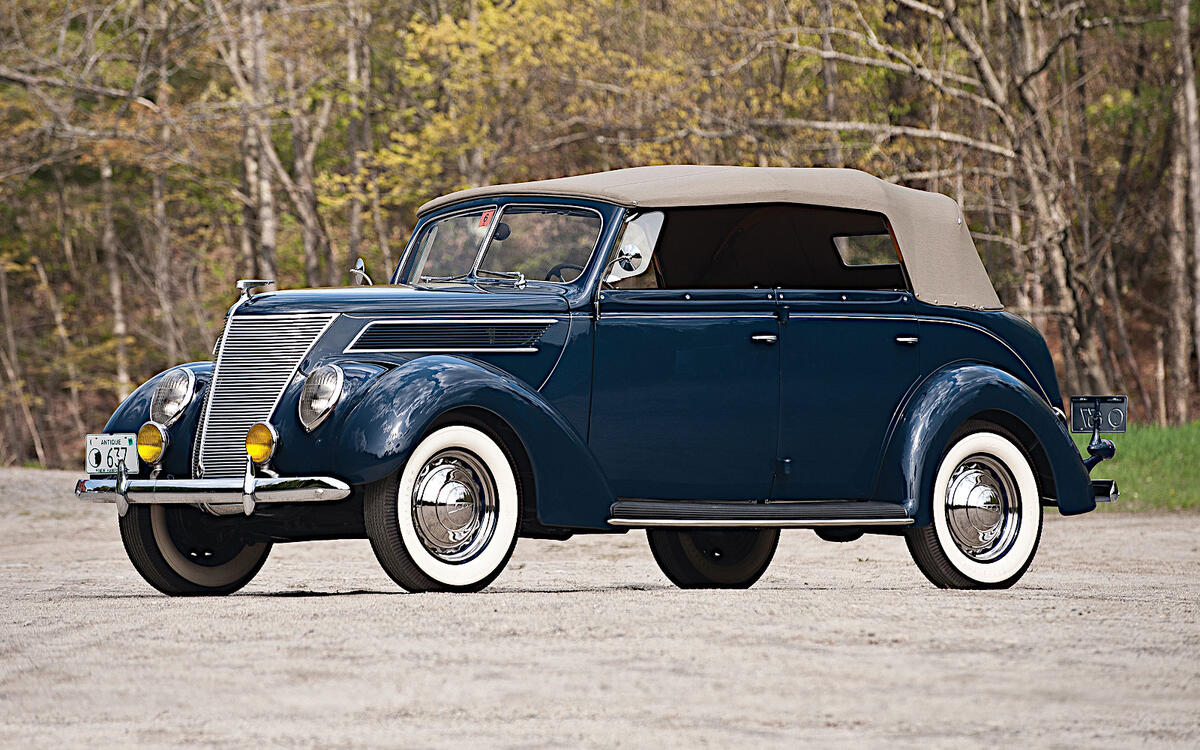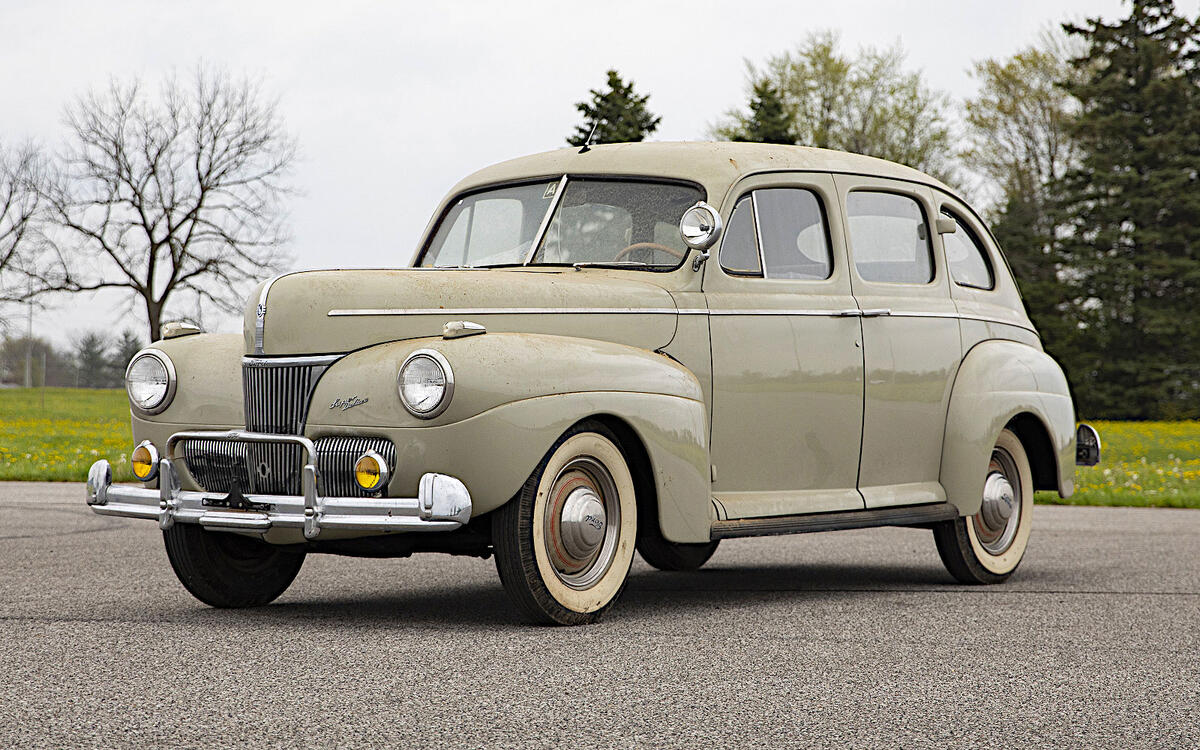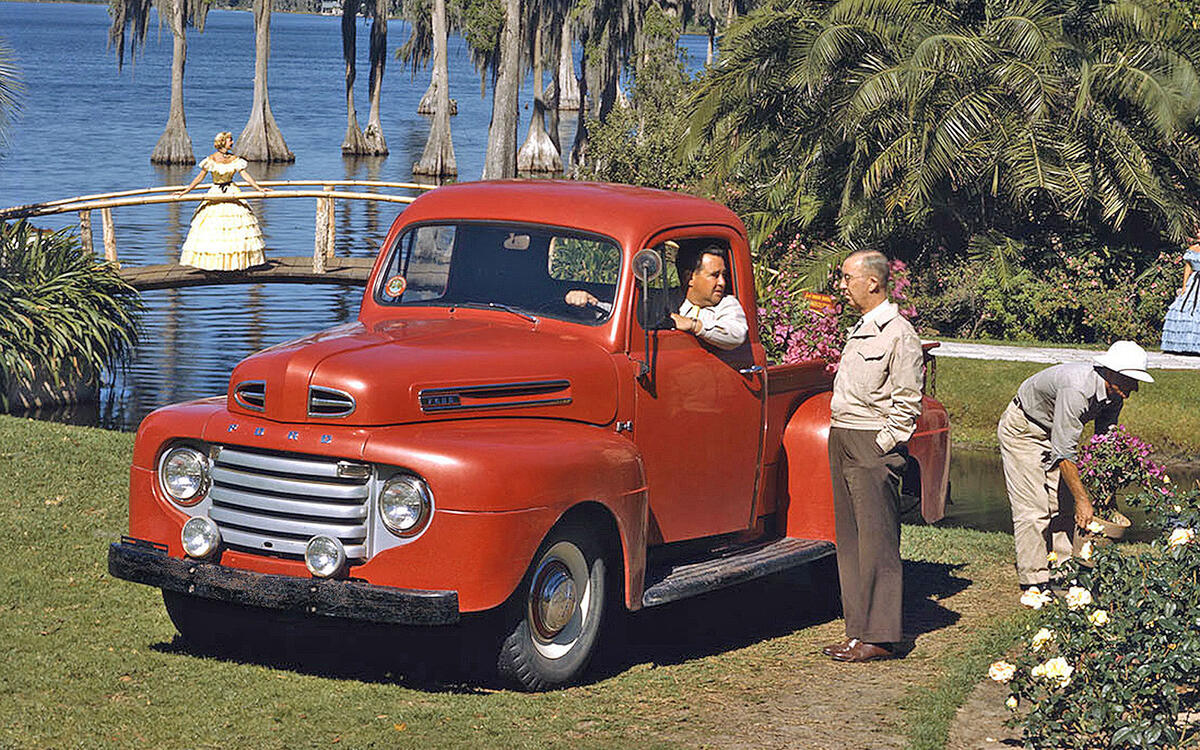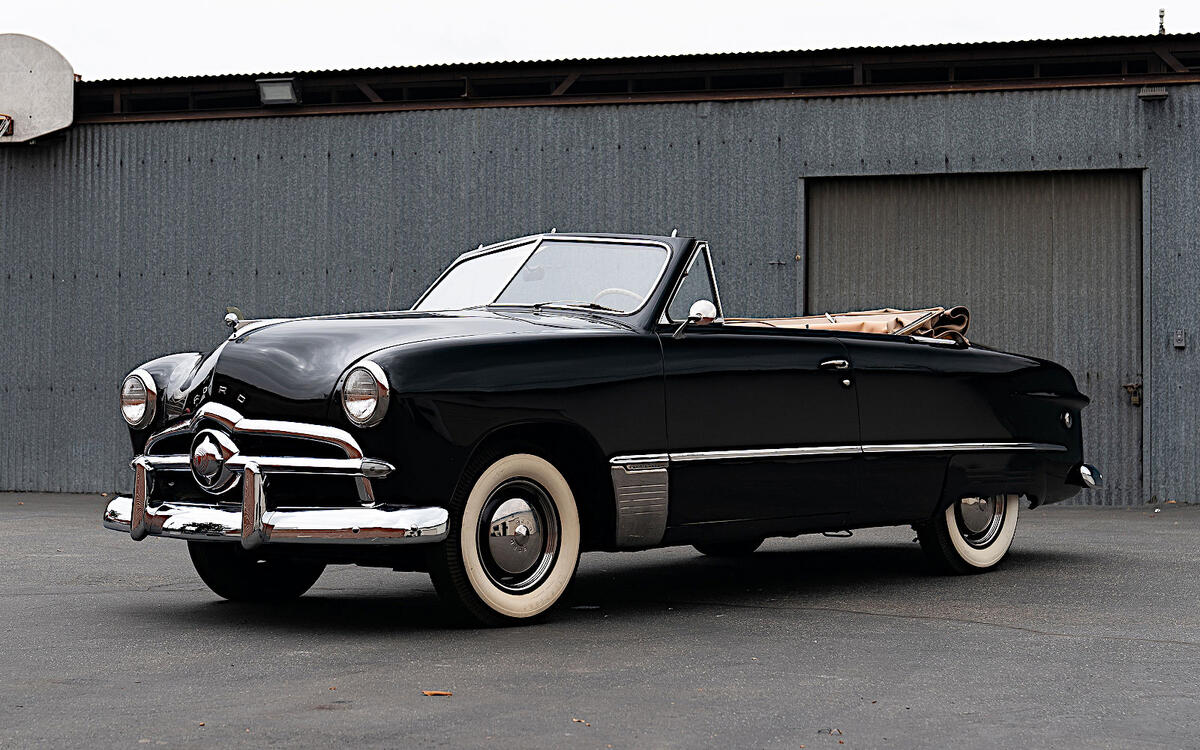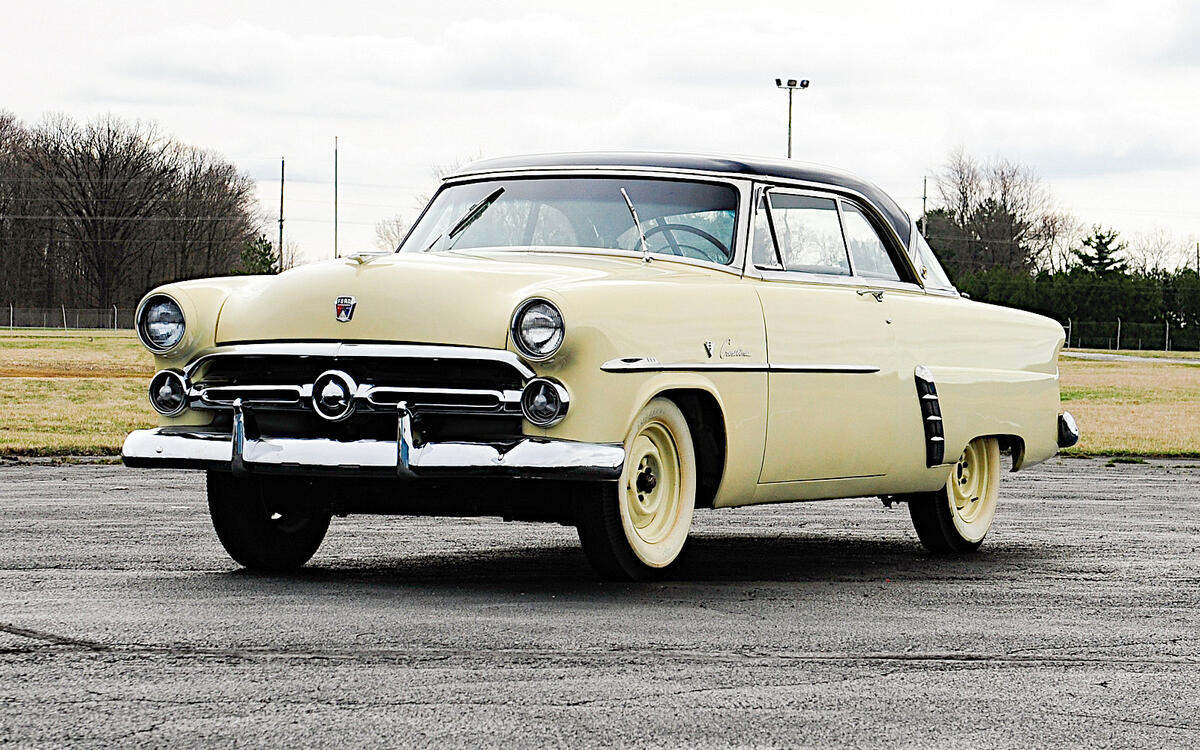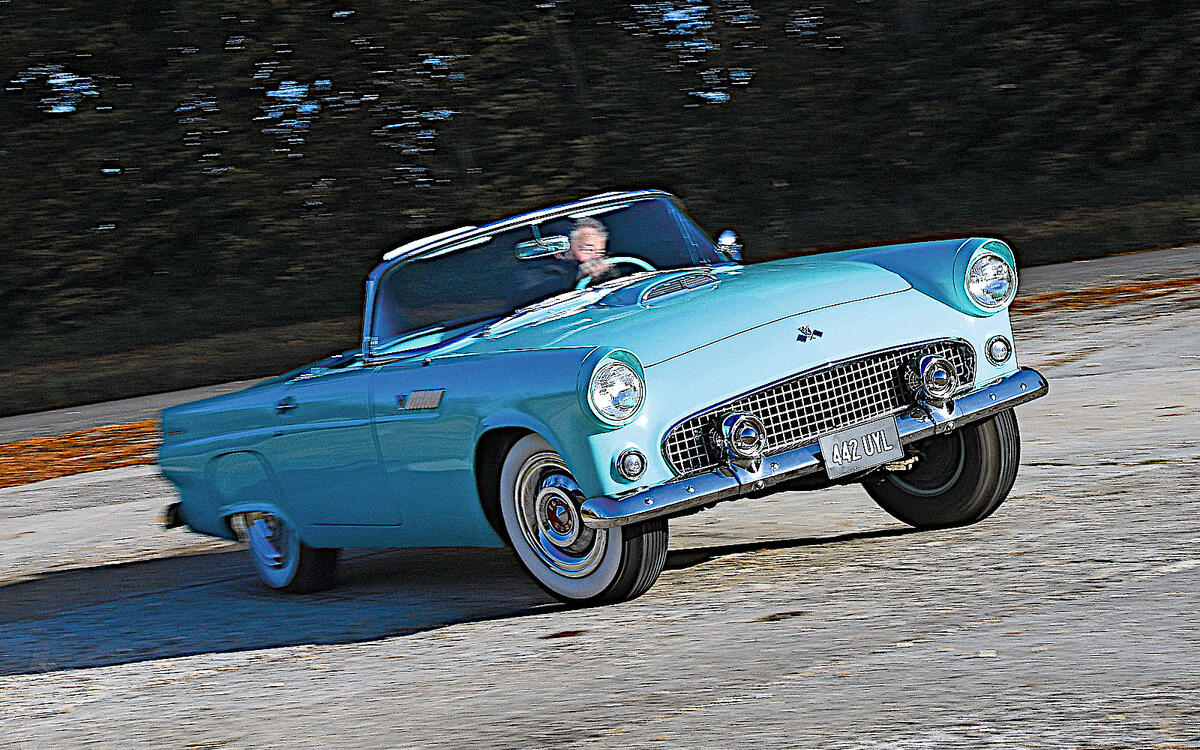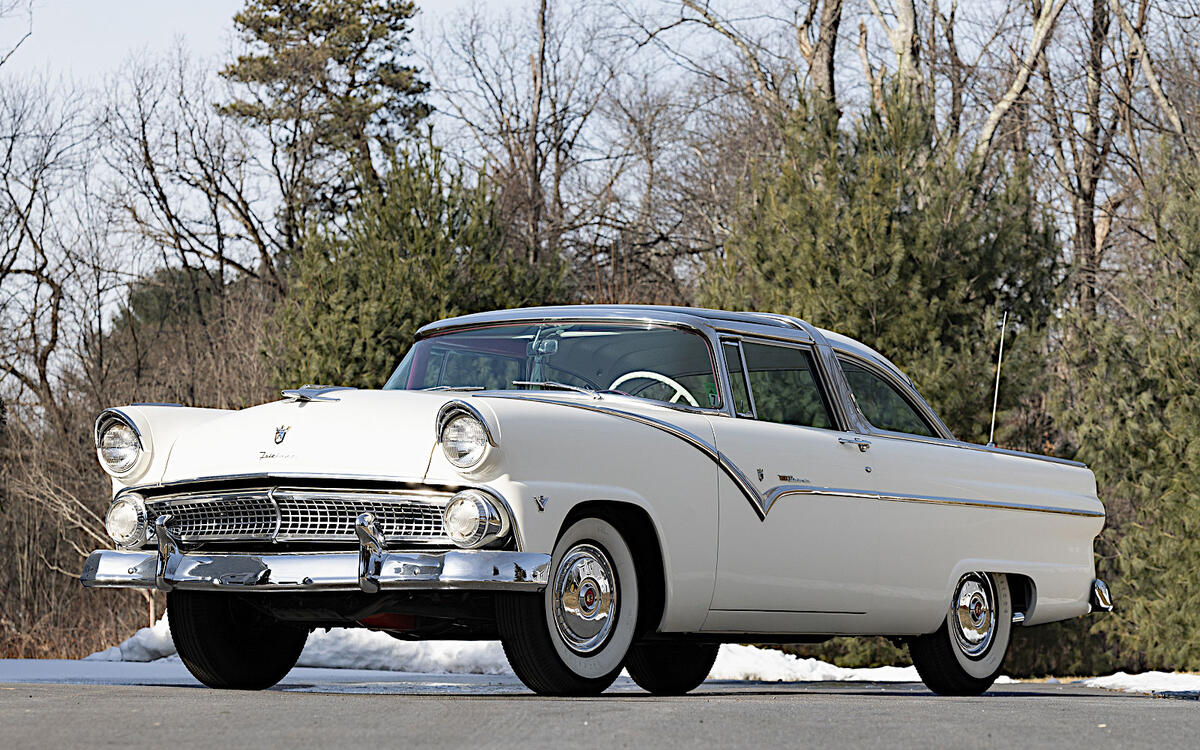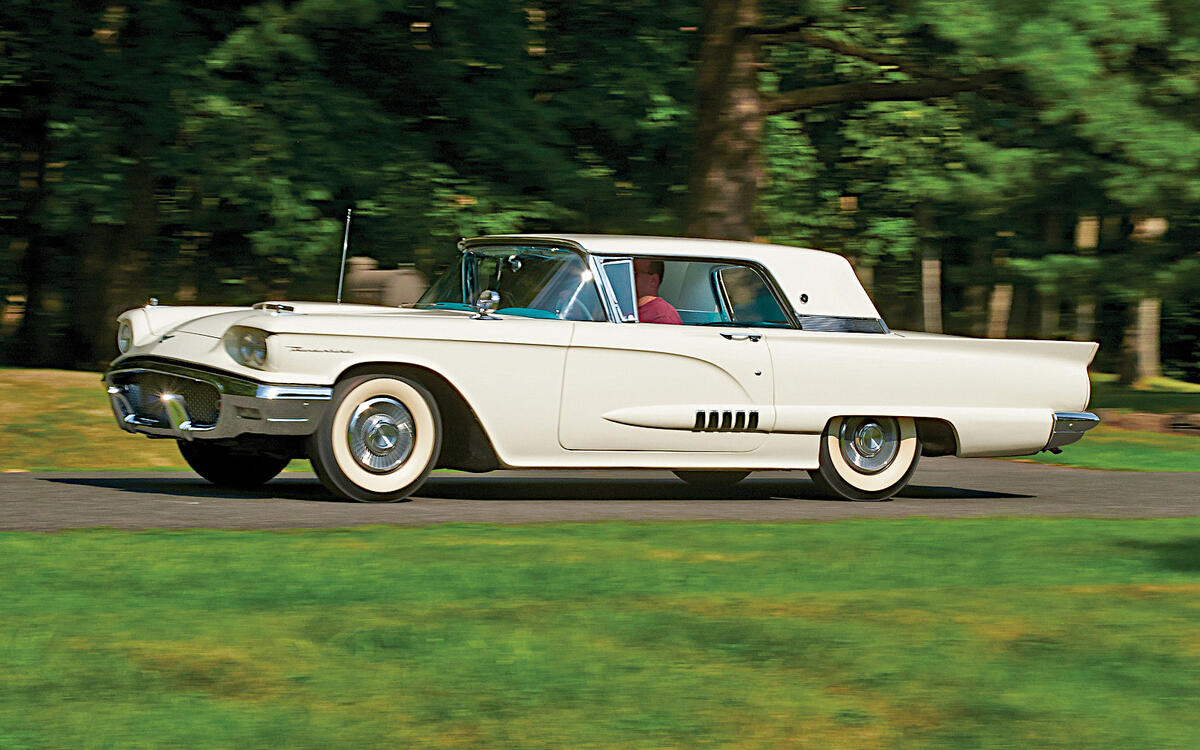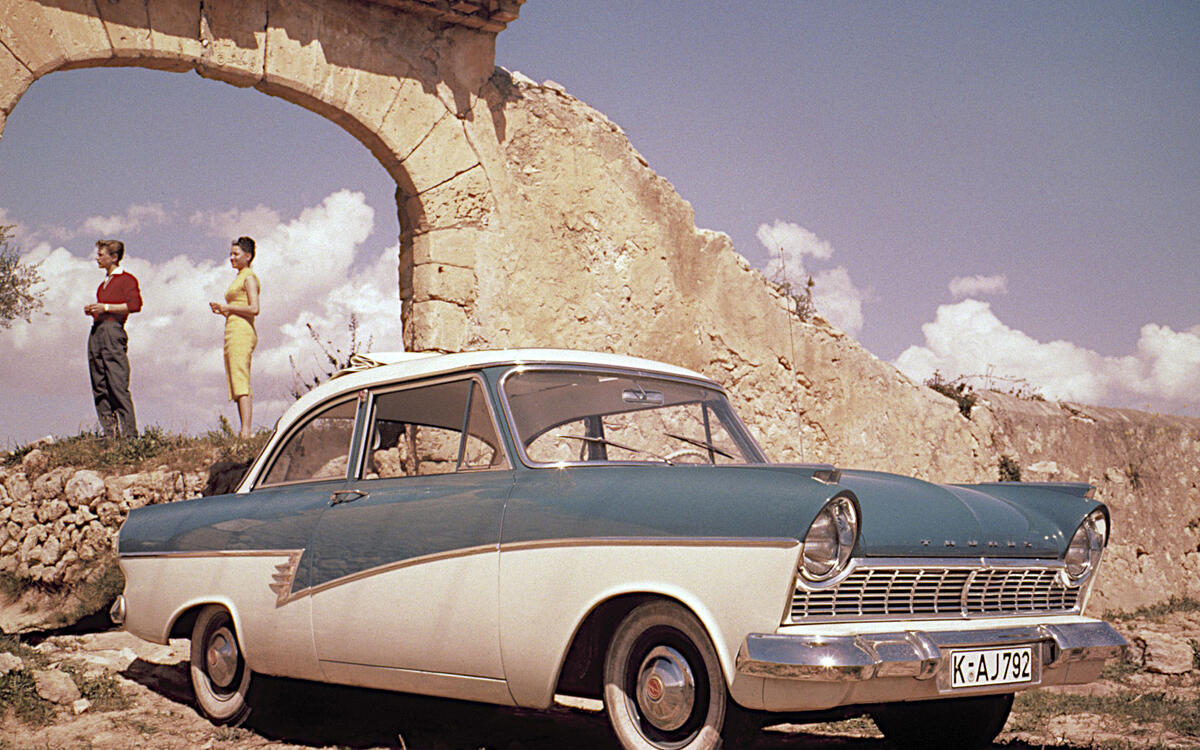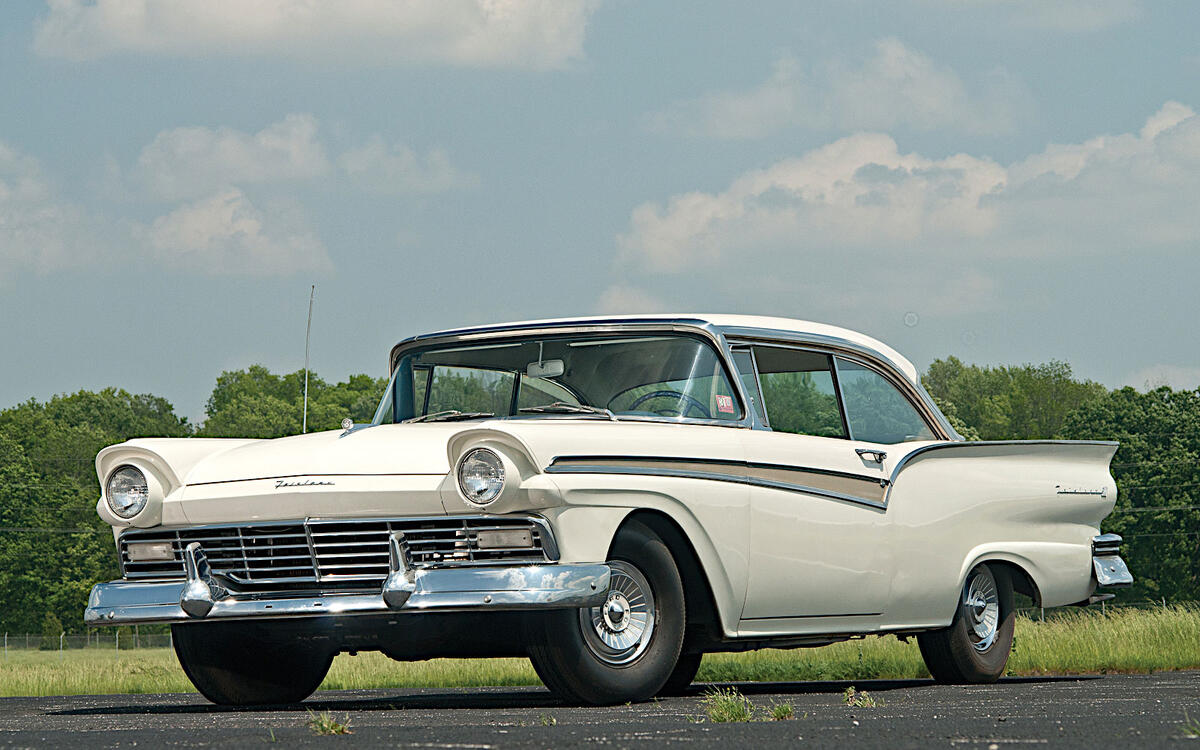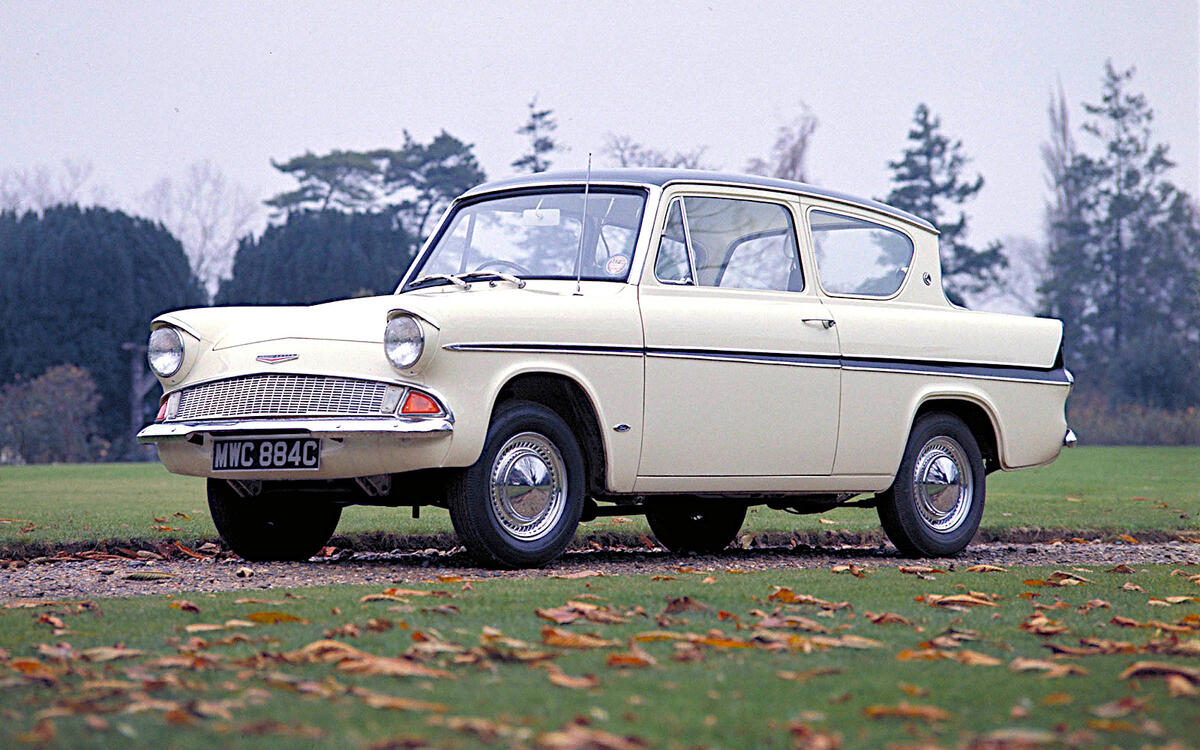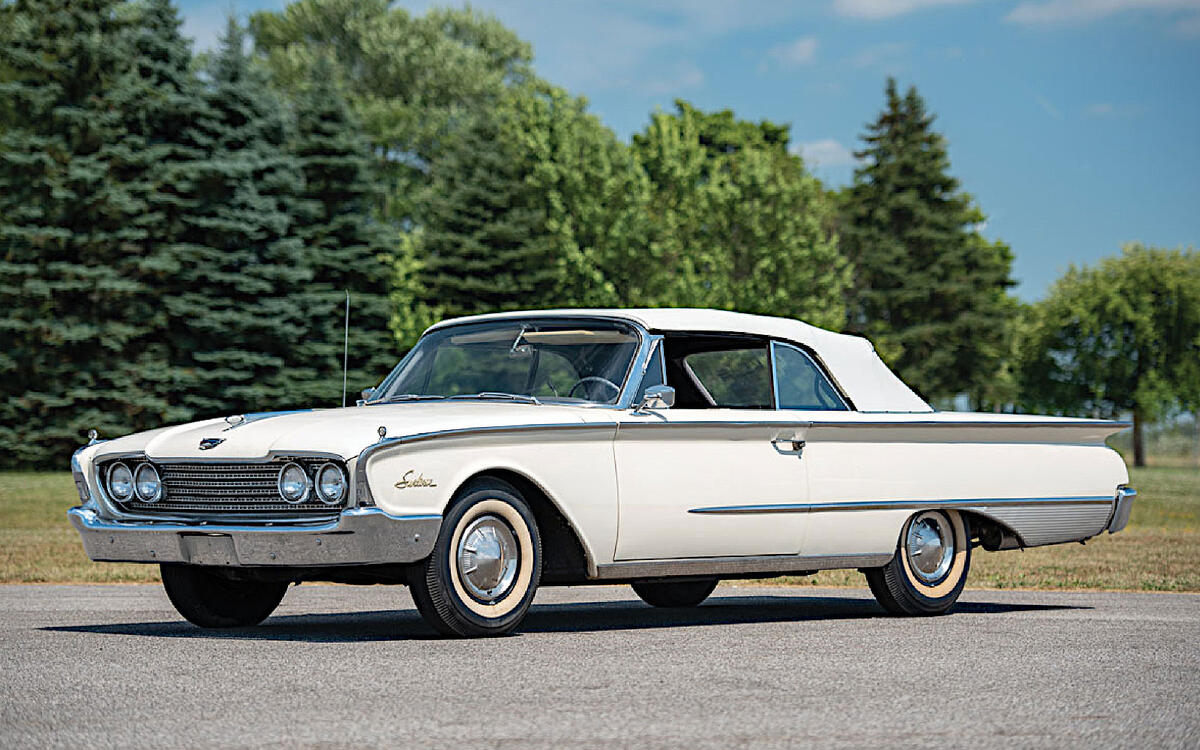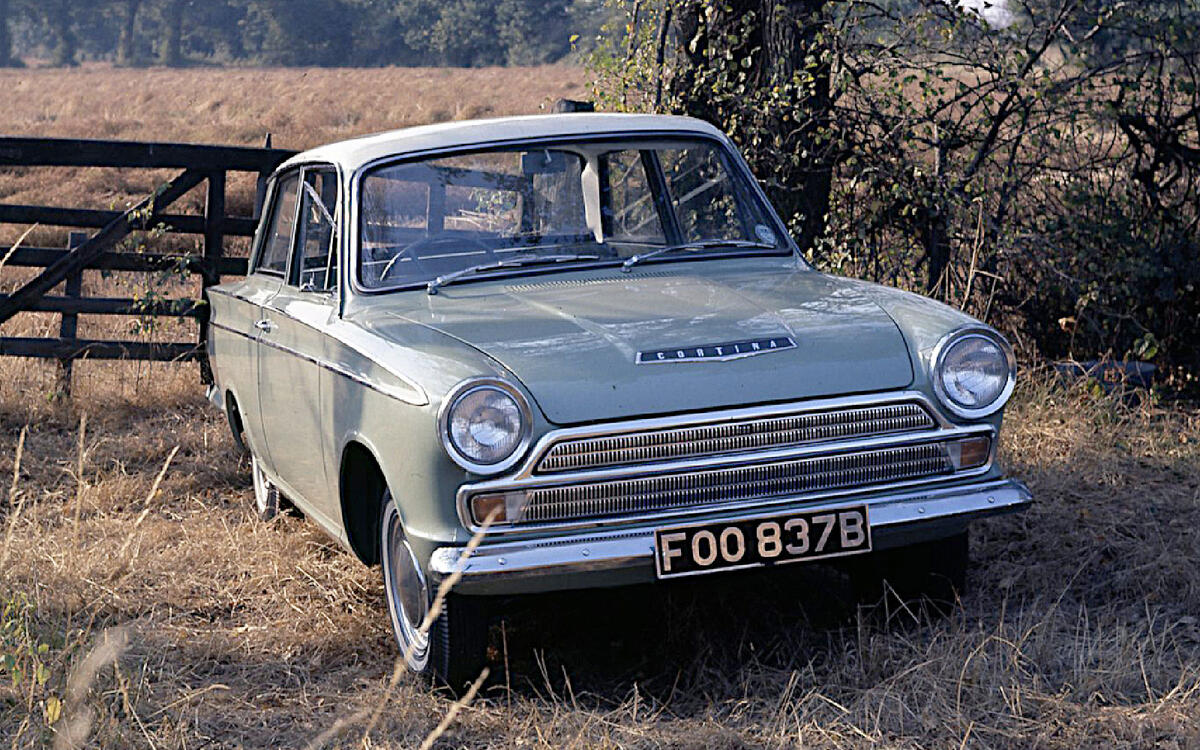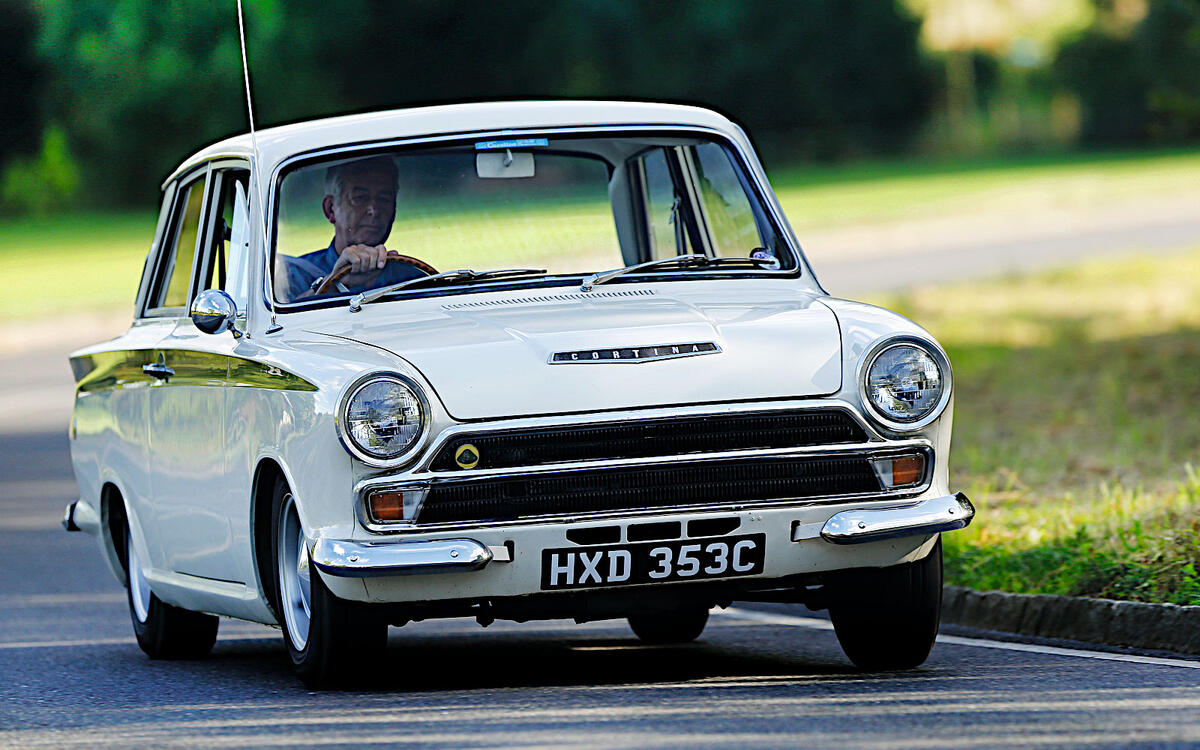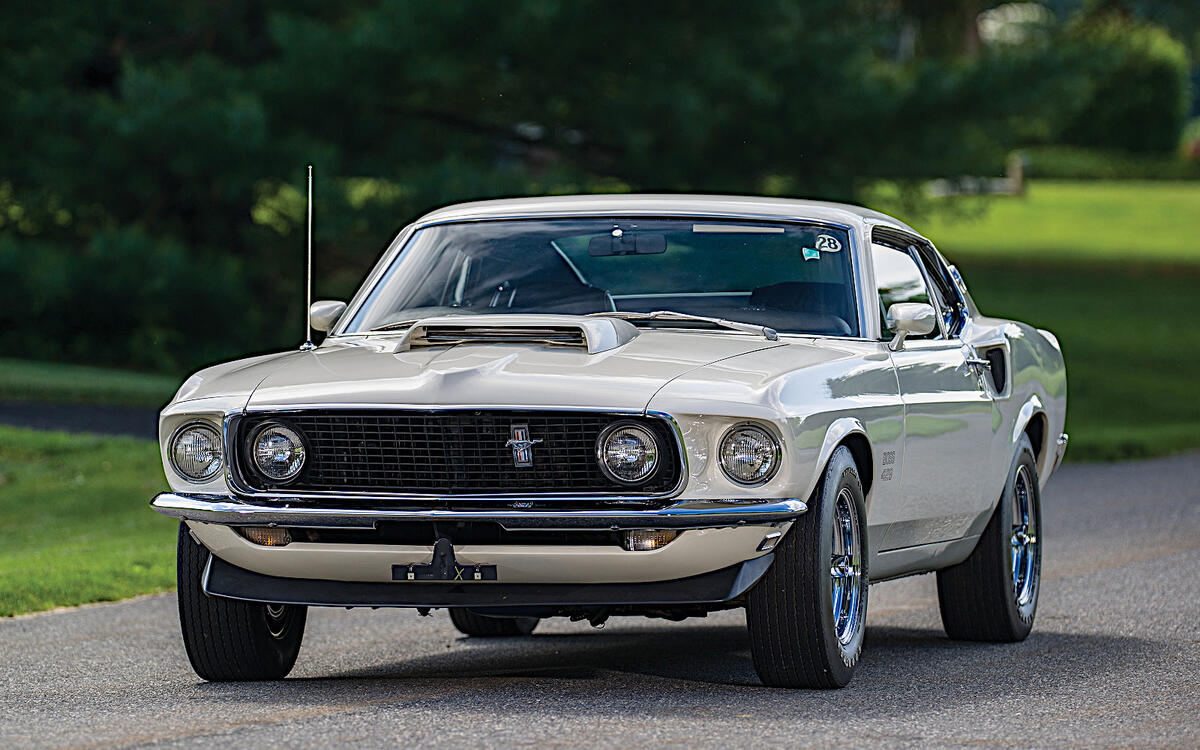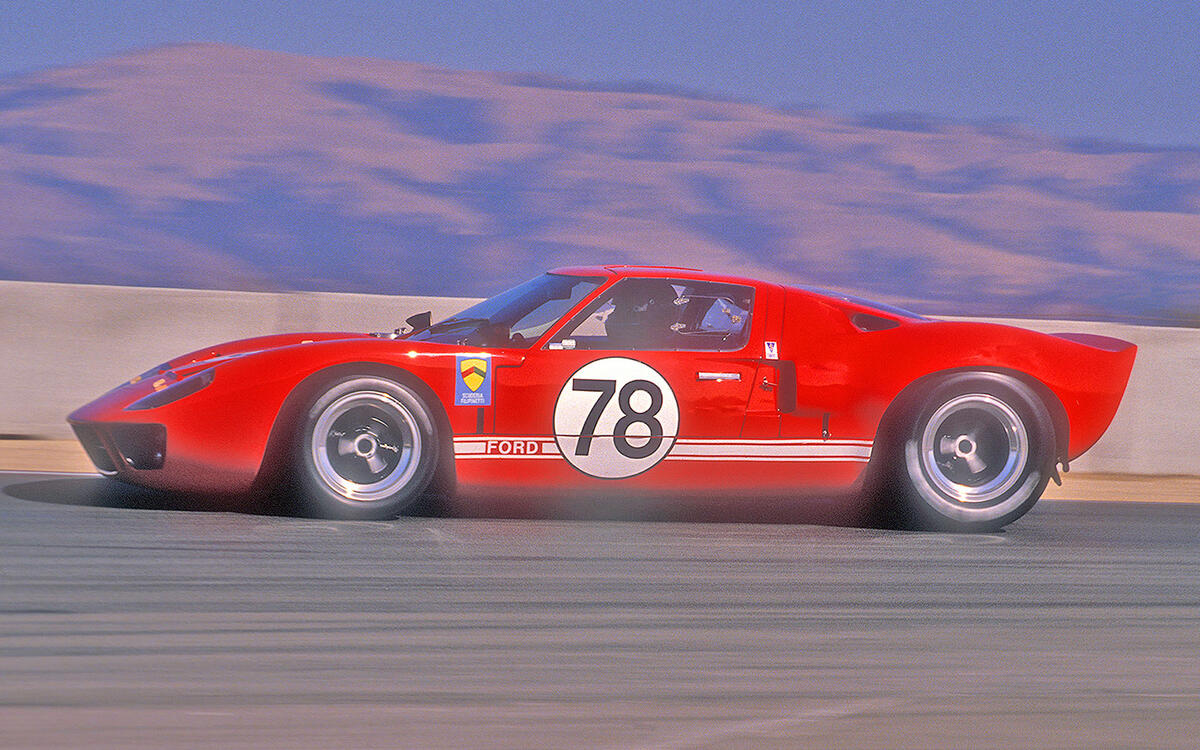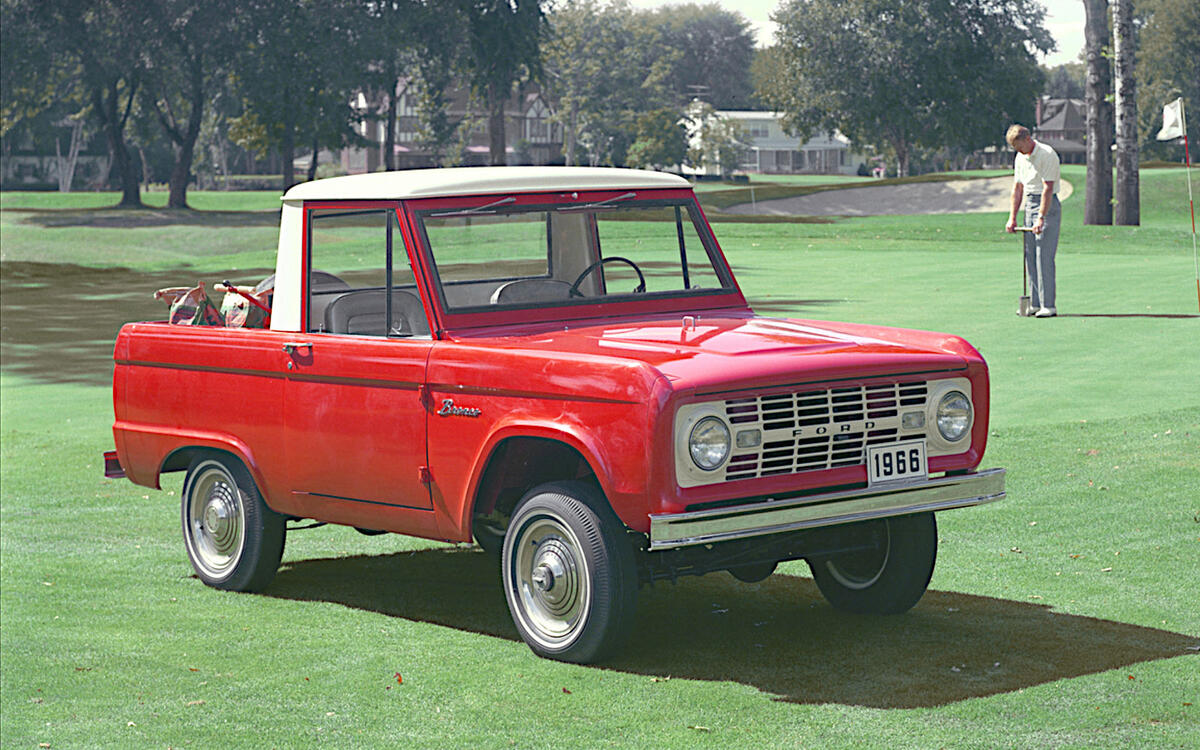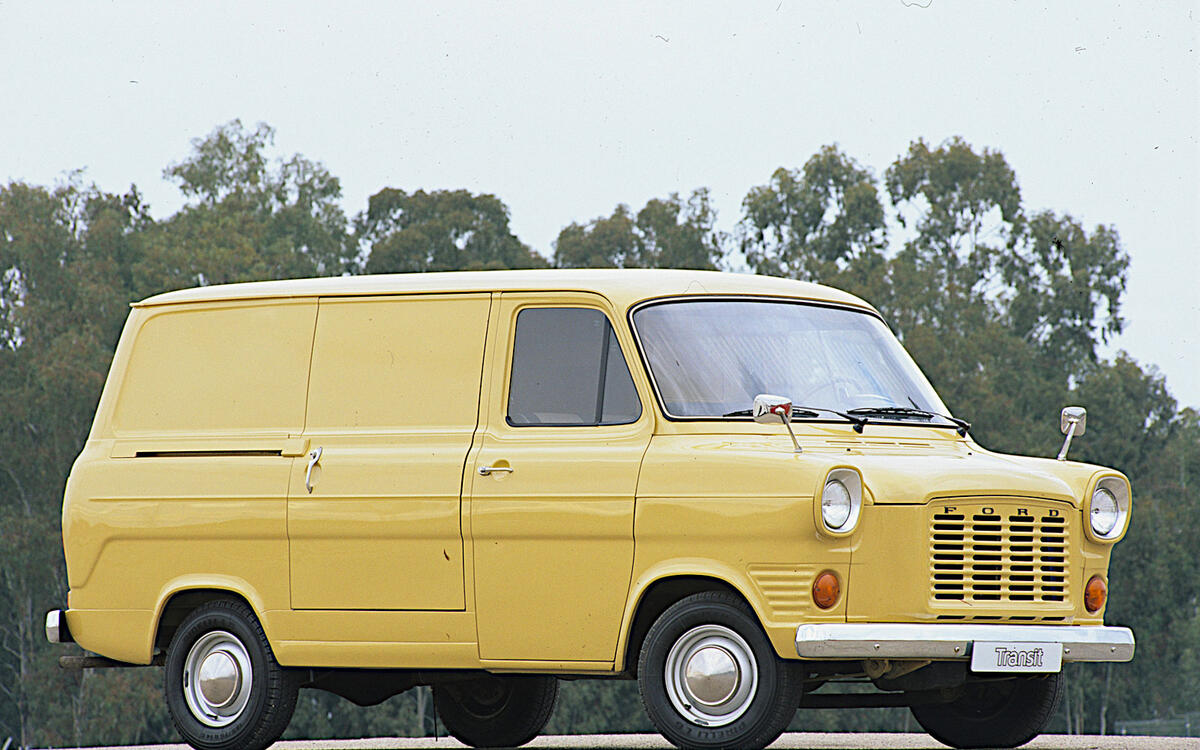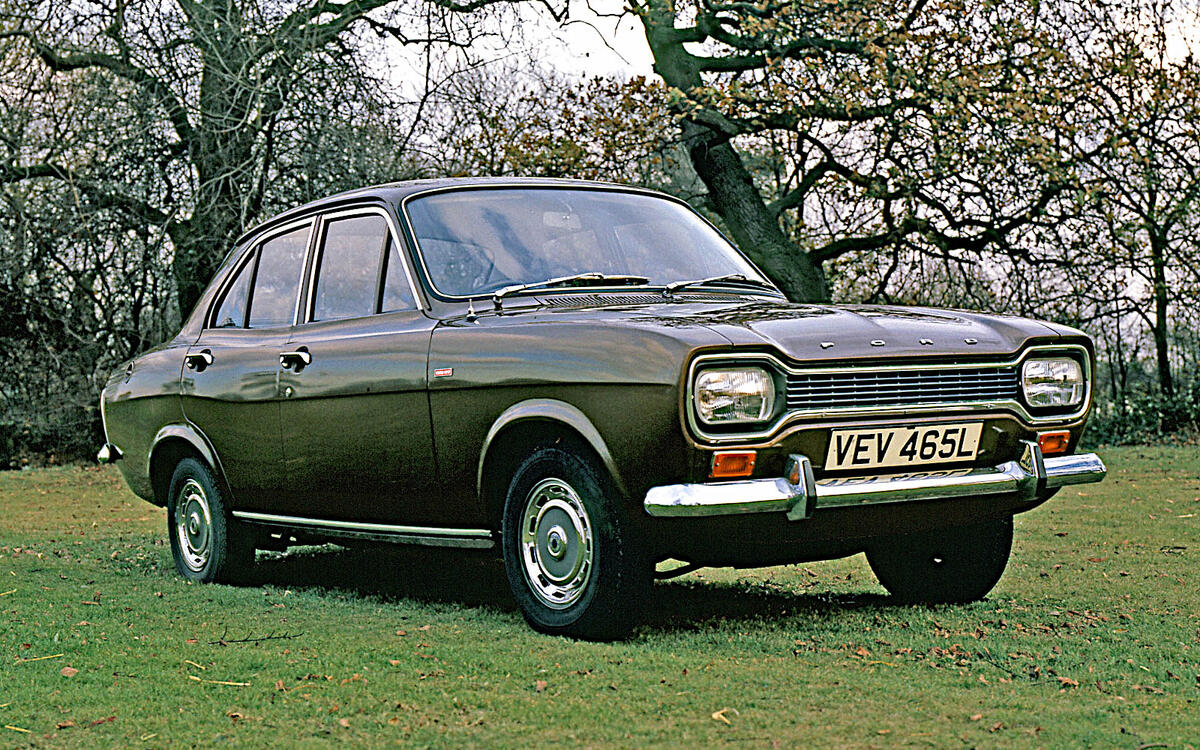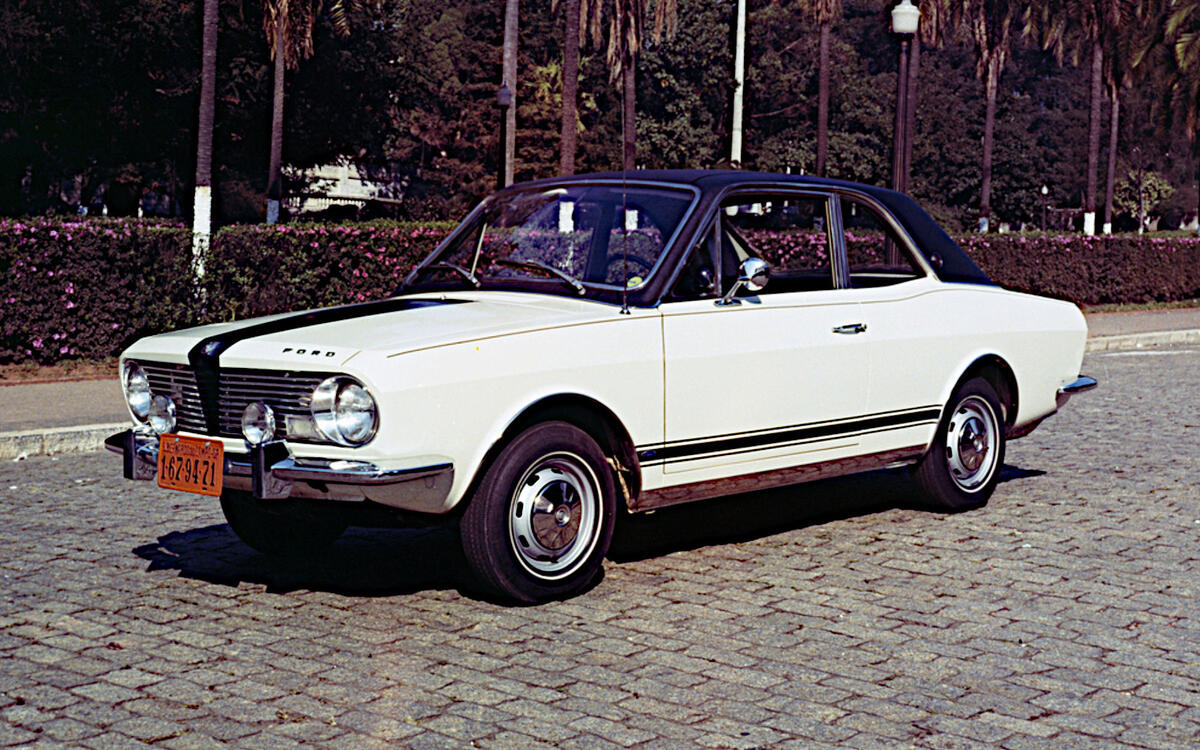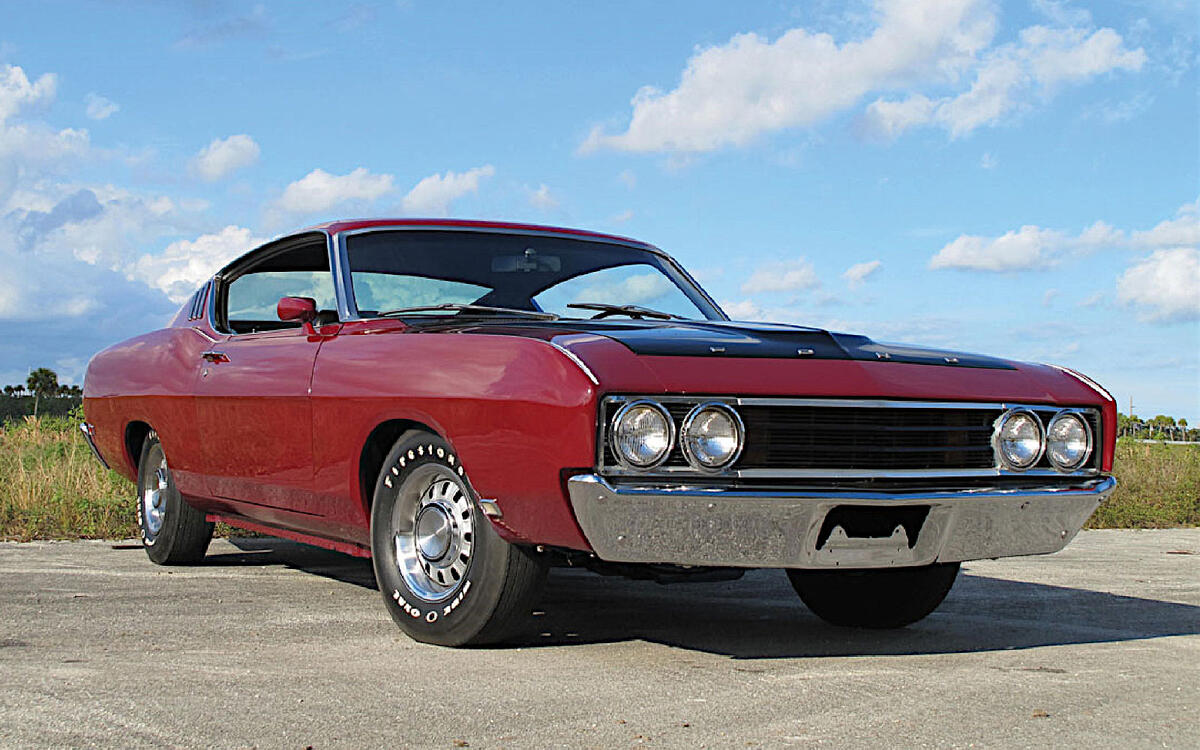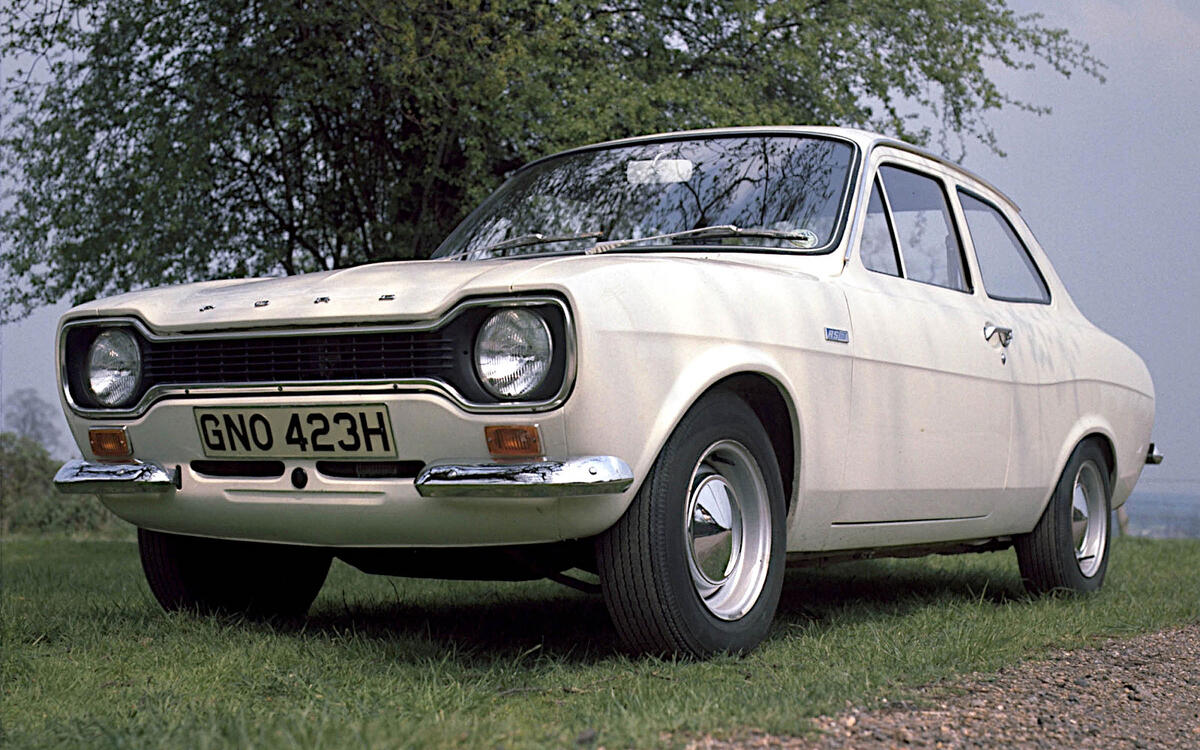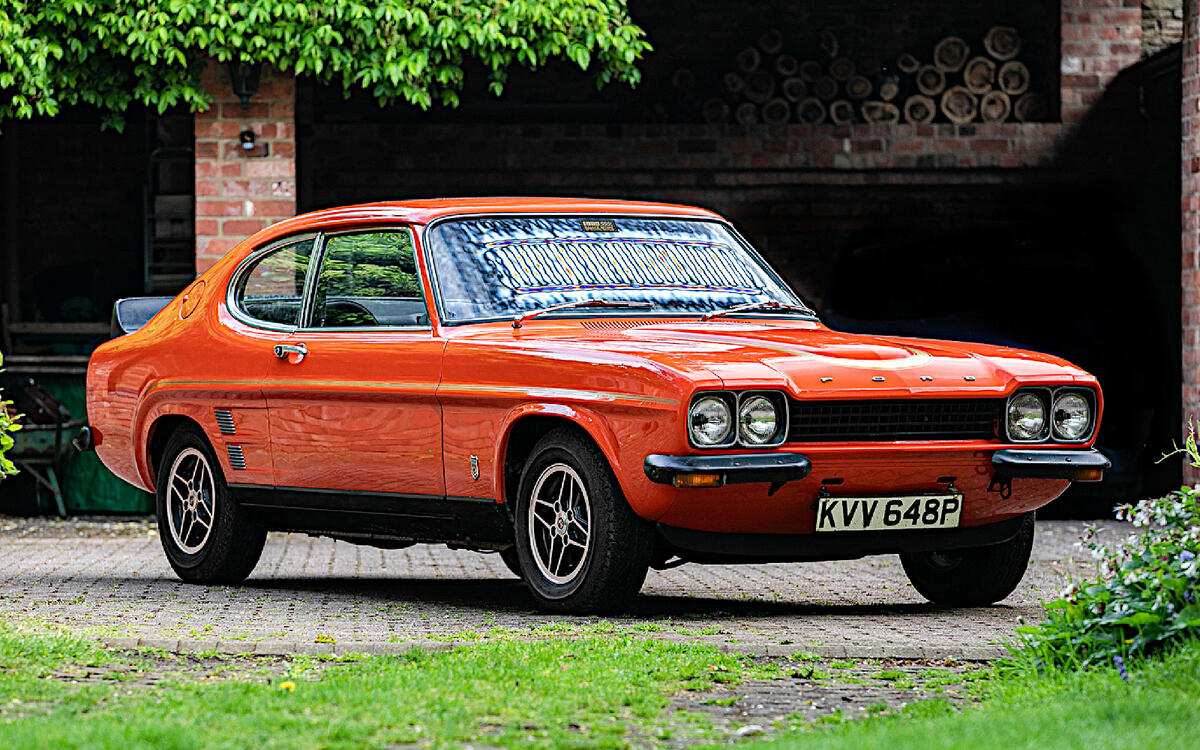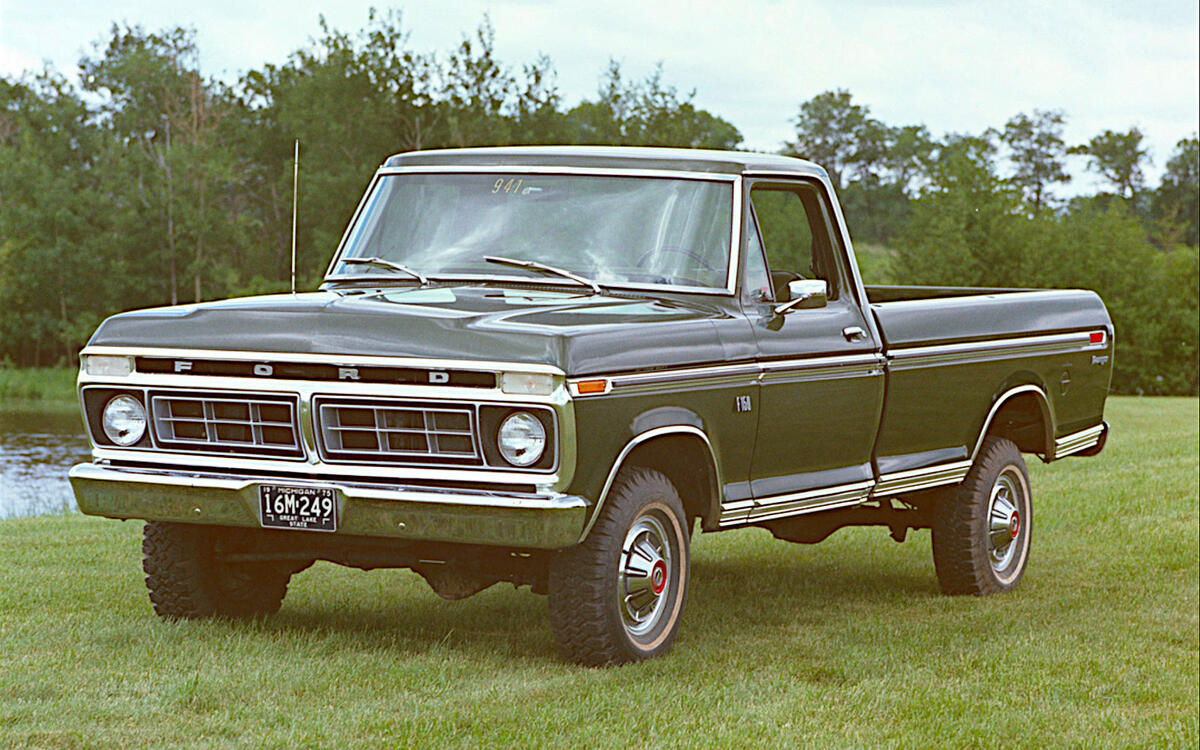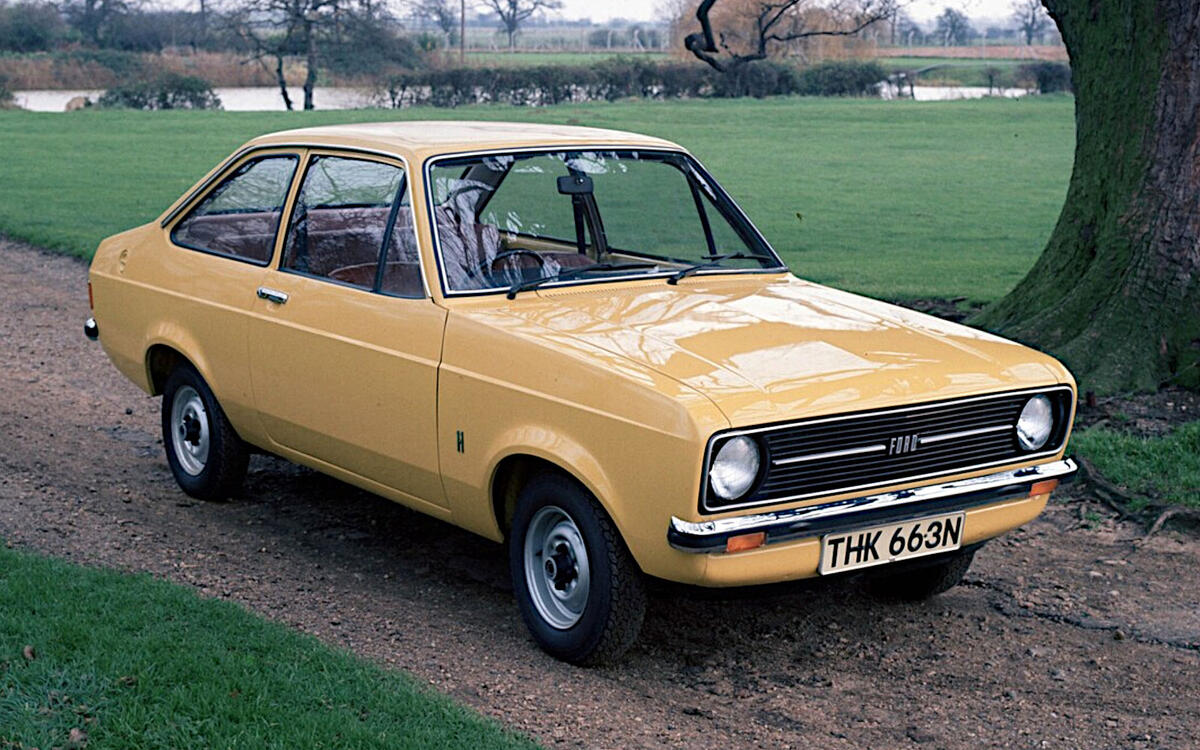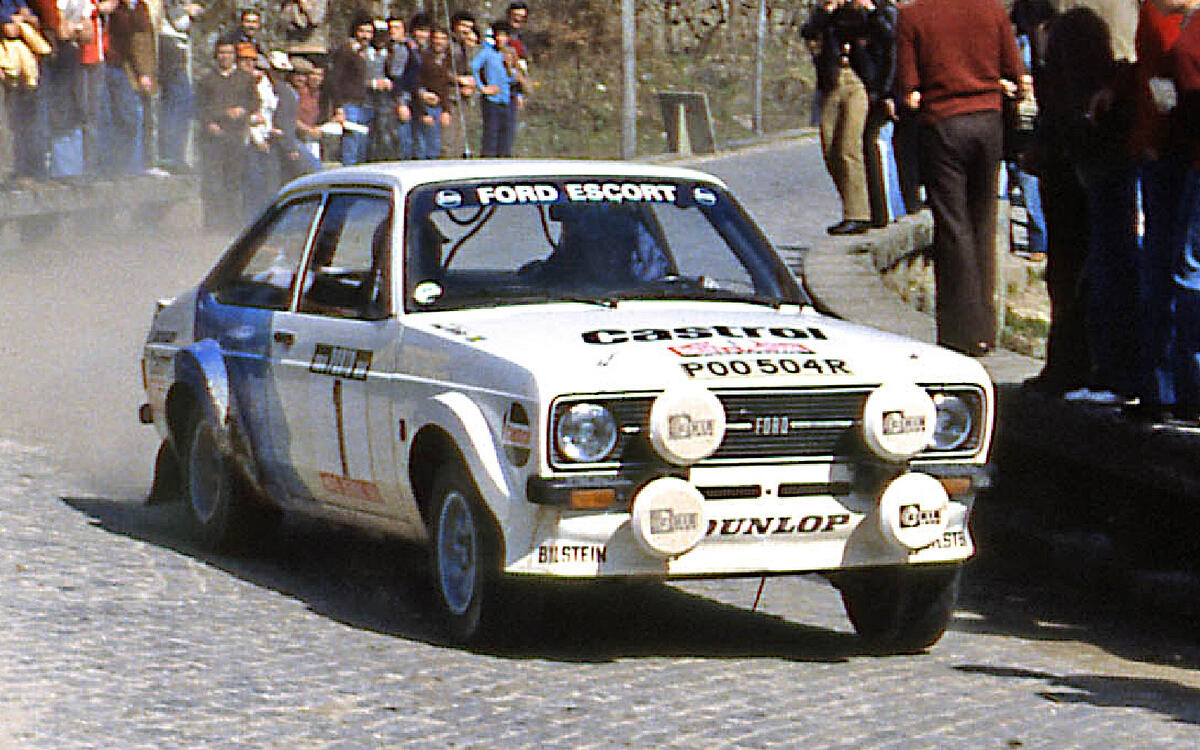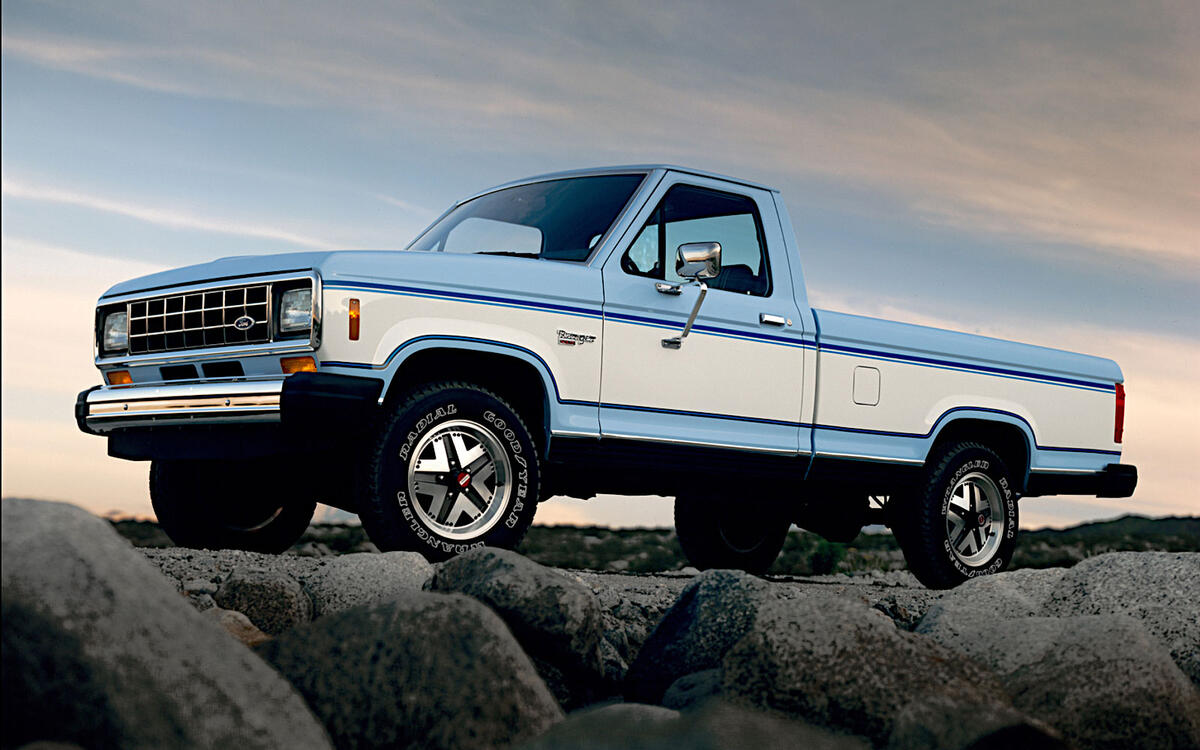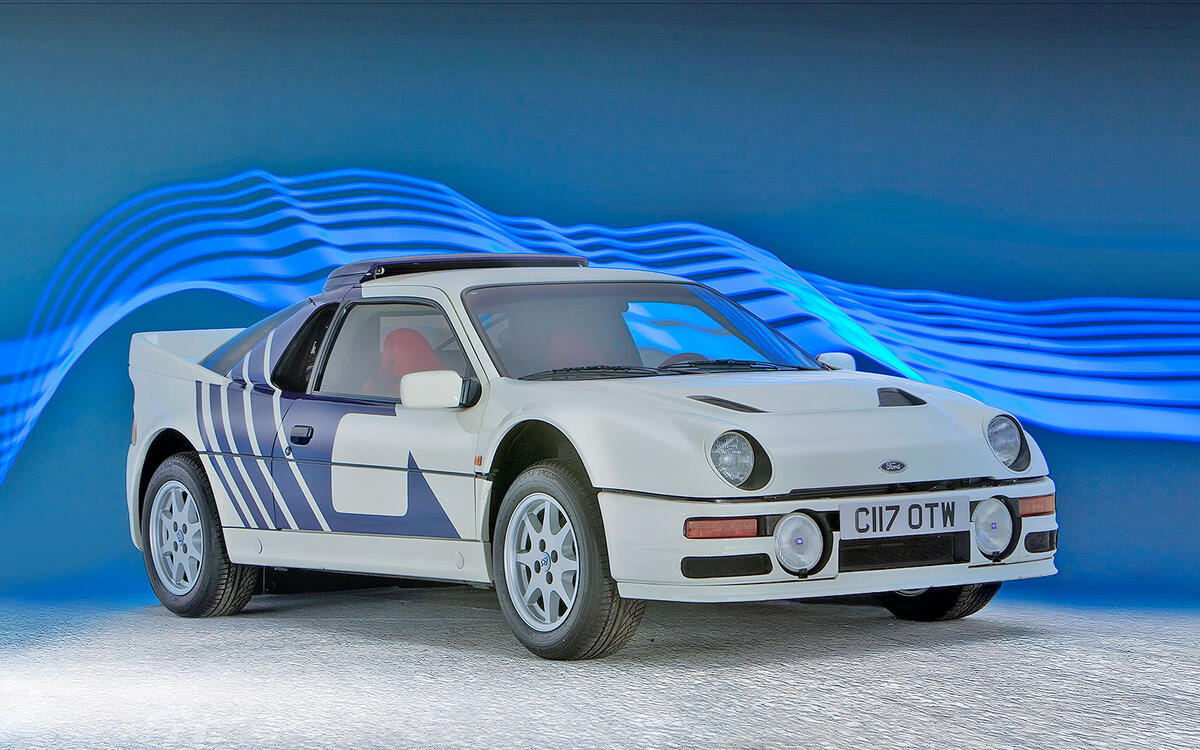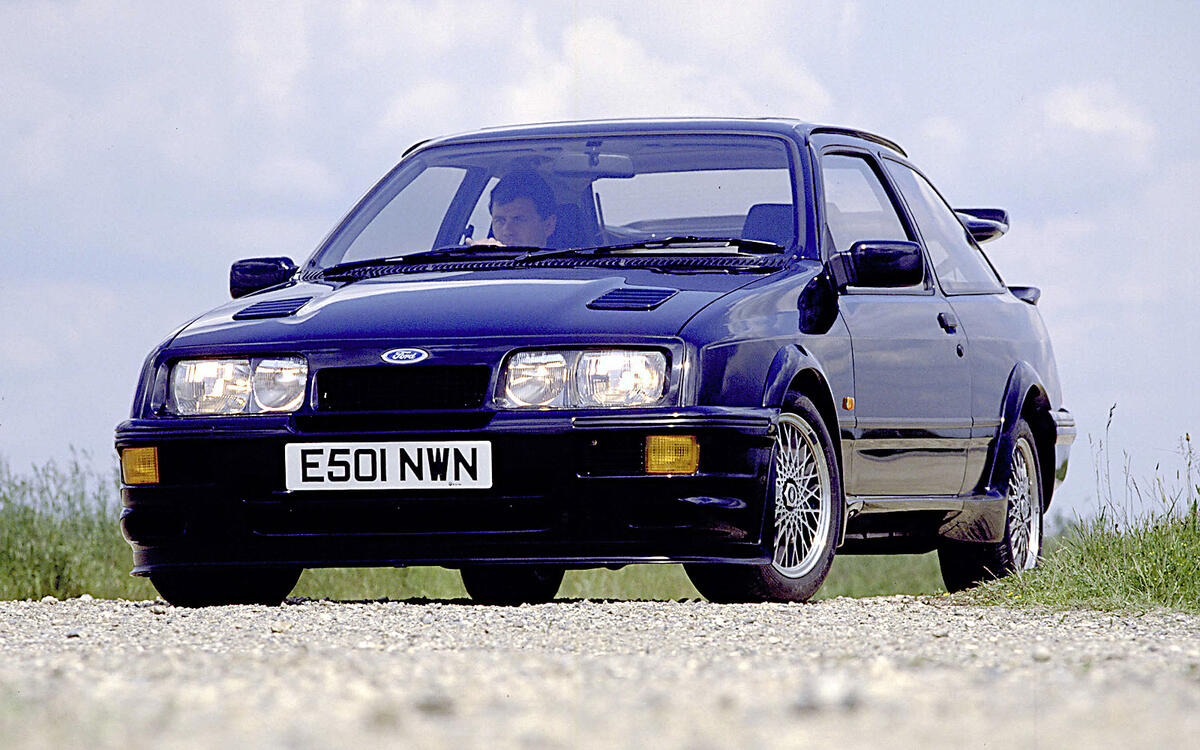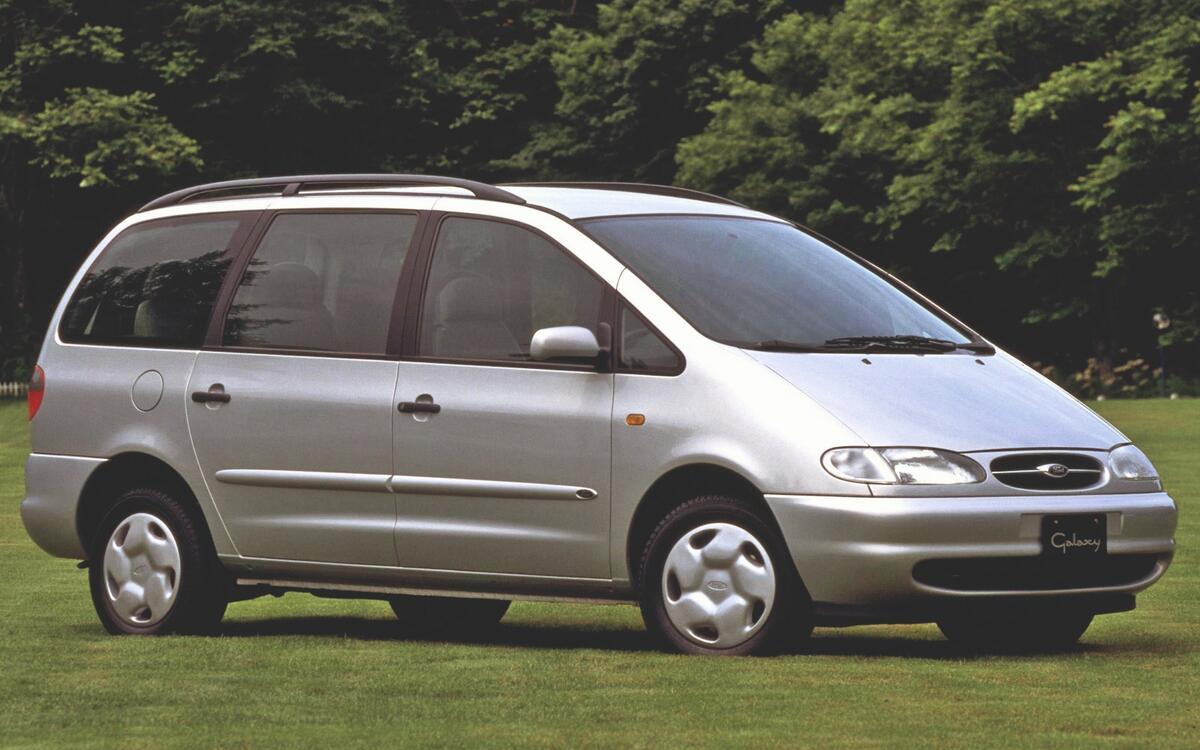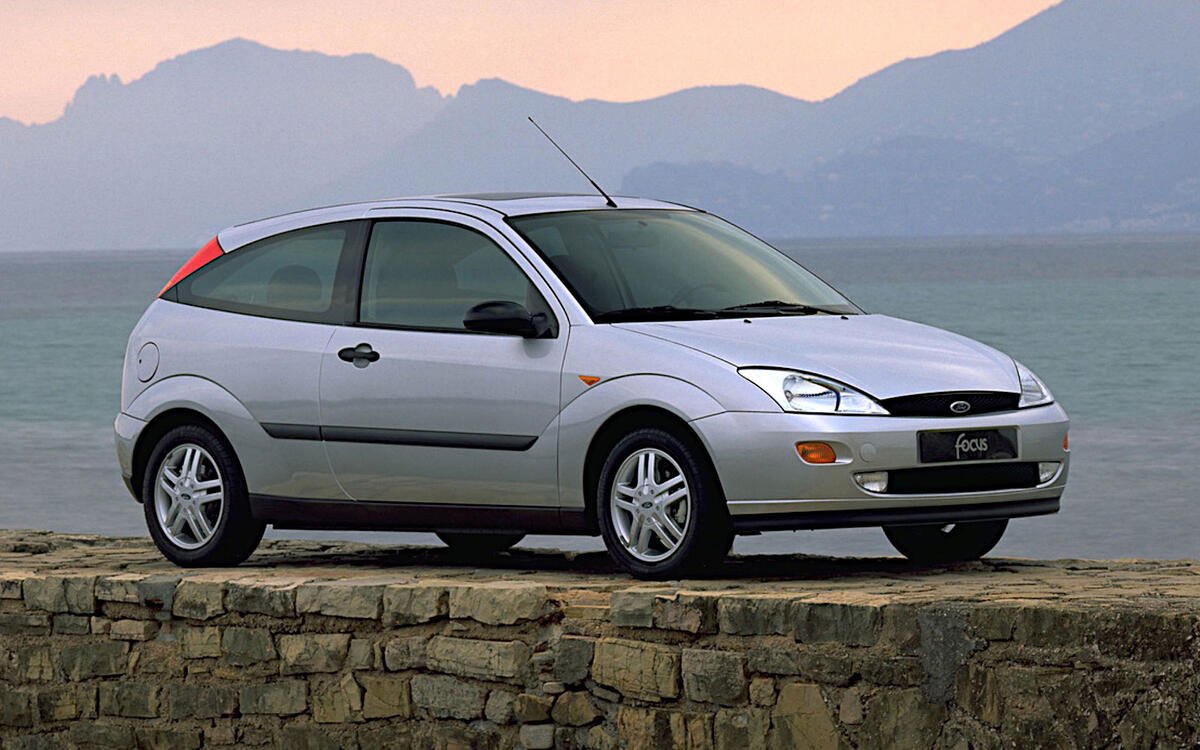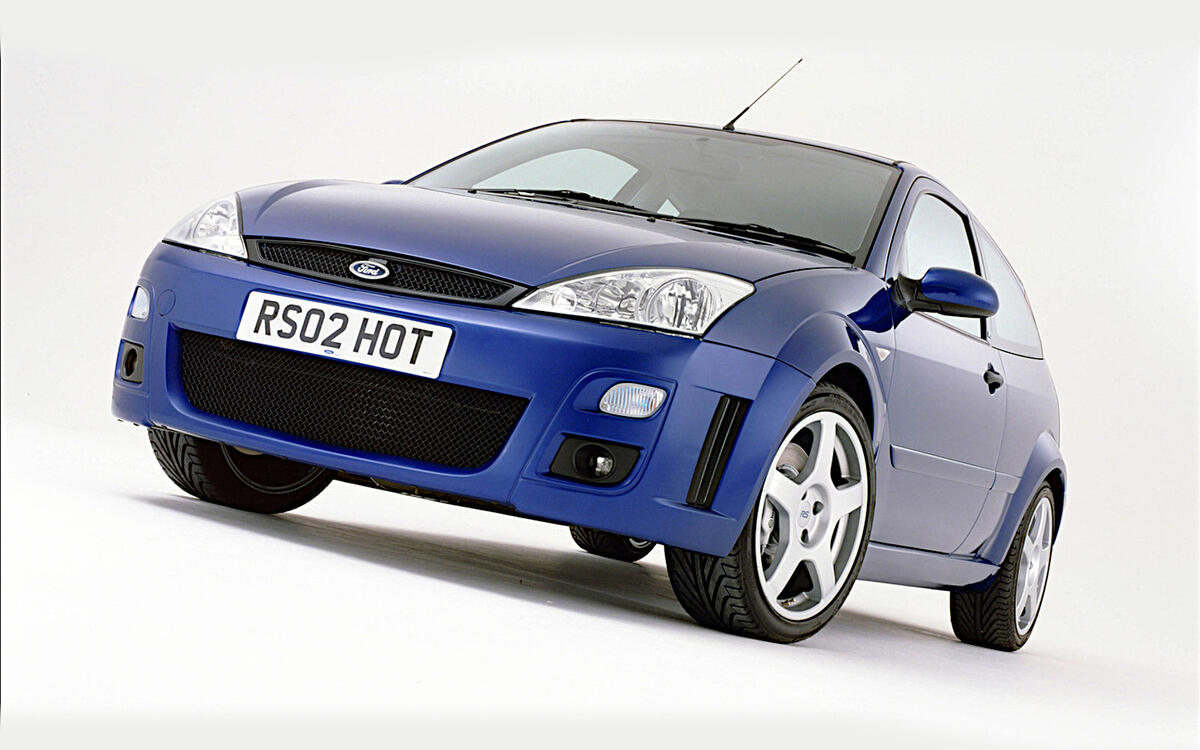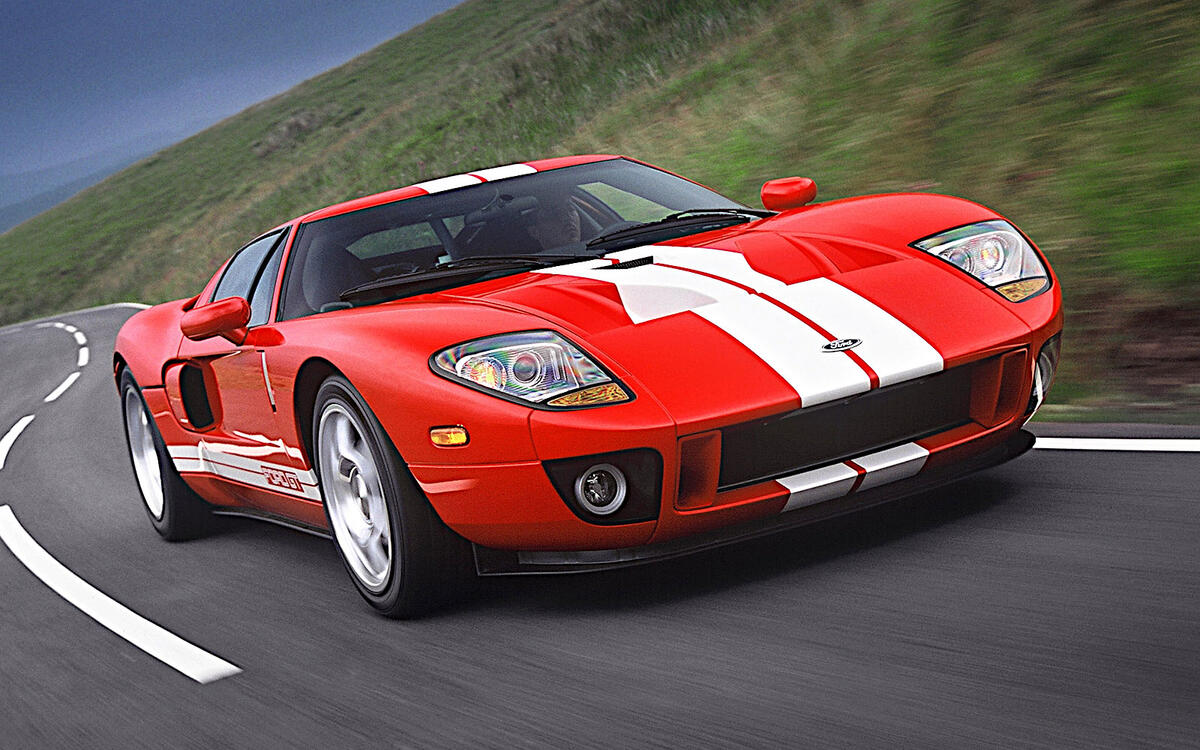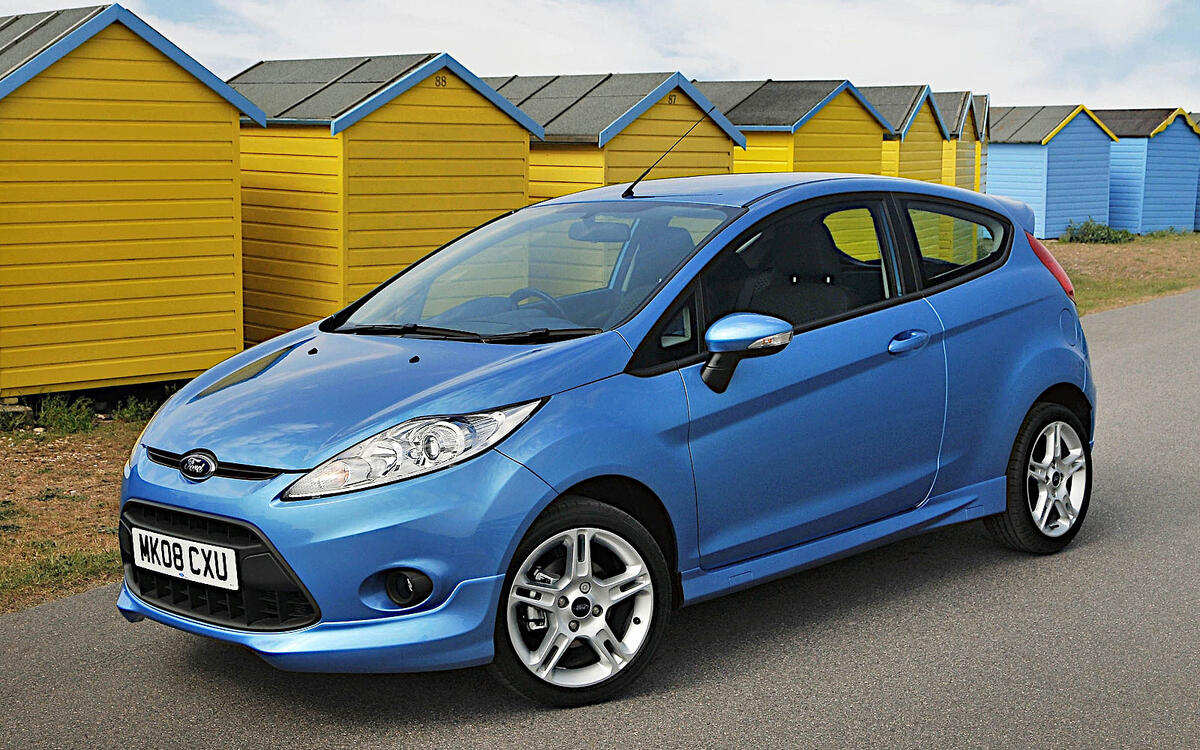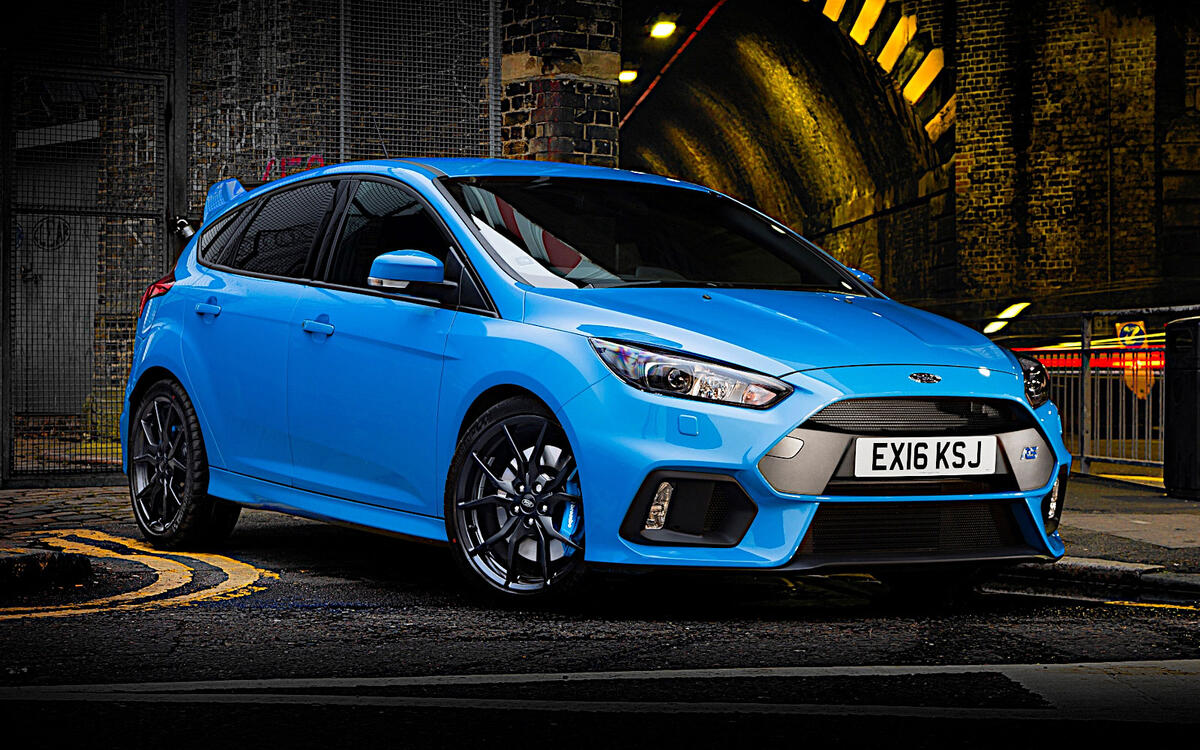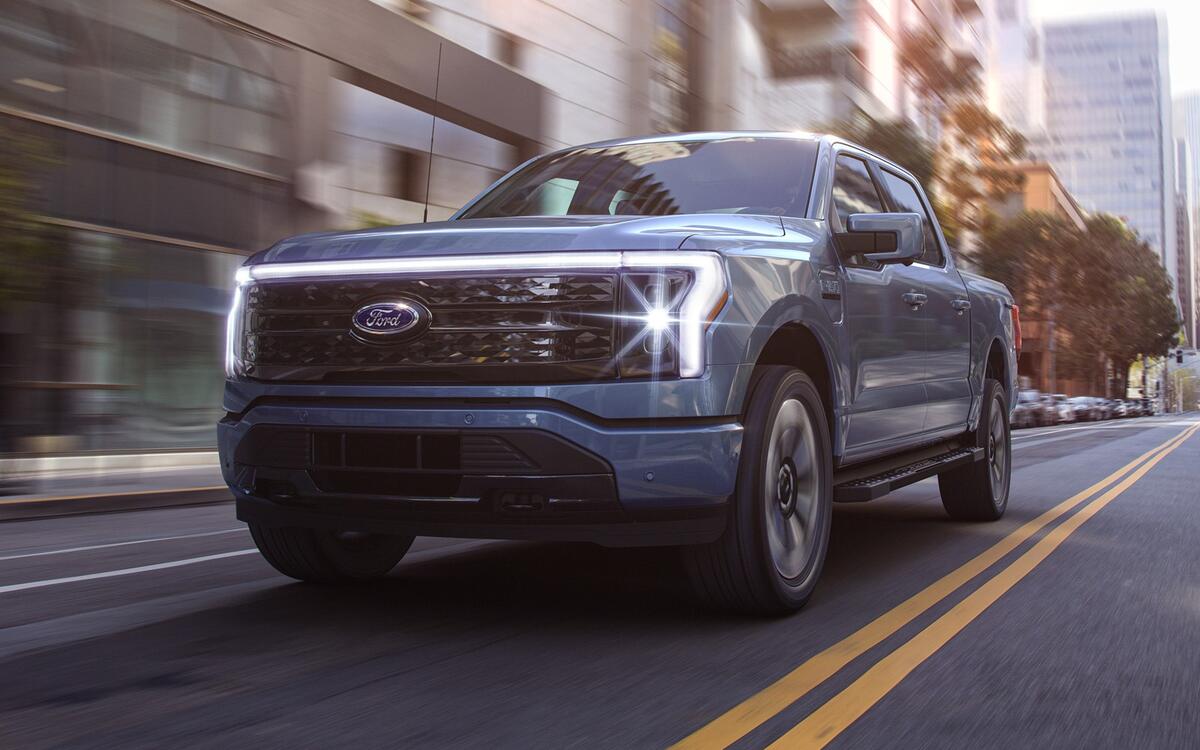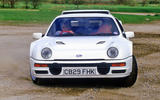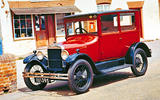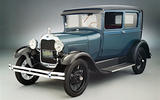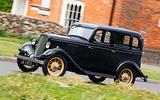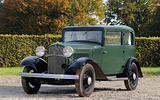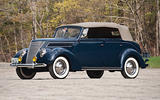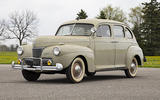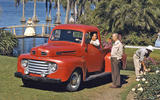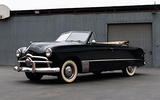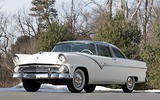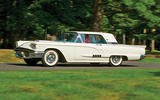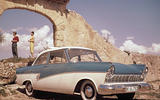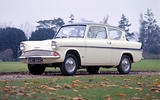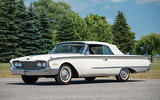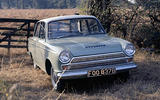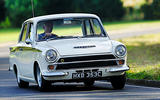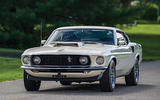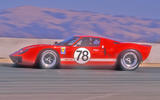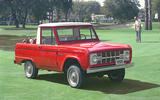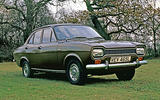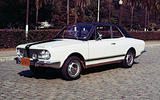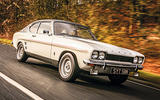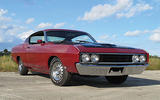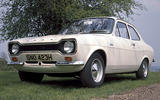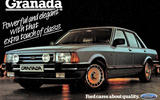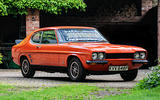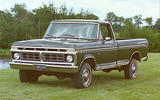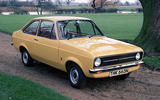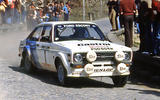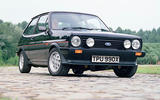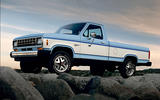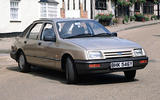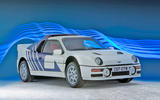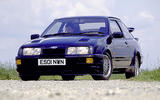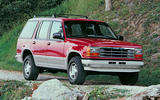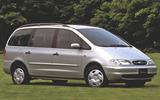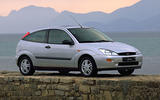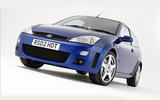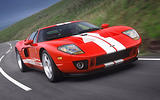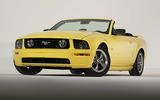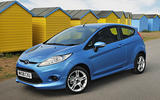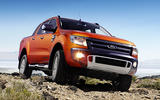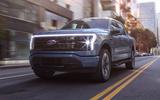 Slide of
Slide of
The Ford Motor Company was founded in Detroit 120 years ago, on 16 June 1903.
Within five years, it had hit the jackpot, creating the most important, and for a long time the best-selling, car in history. Today, it remains one of the largest manufacturers in the world, and one - with its ubiquitous cars and vans - that has ingrained itself into the culture of the UK like few other foreign firms.
This would not have been possible if it hadn’t produced a long series of great models. The definition of ‘great’ is fluid – we’re using it here to describe cars which might not have excelled in all areas, but which at least pushed Ford forward in one way or another. Among many other possibilities, we’re listing 50, in order of when they first went on sale:
 Slide of
Slide of
Ford Model A (1903)
The main requirement of any manufacturer’s first car is that it should be successful enough to allow the company to create a second. The Model A was short-lived, remaining in production for only a year, but it at least fulfilled that requirement.
It bore a close resemblance to the contemporary Cadillac Model A, which is perhaps not surprising since Cadillac was a reorganisation of the second company founded by Henry Ford (1863-1947), which was itself a reorganisation of his first. The main difference between the two cars was that while the Cadillac was powered by a 1.6-litre single-cylinder engine, the Ford had a 1.7-litre twin.
 Slide of
Slide of
Ford Model T (1908)
Technological advance and the rapid growth of the US auto industry combined to ensure that none of the earliest Fords remained on sale for more than a couple of years. In contrast, the Model T was available all the way through from 1908 to 1927, and ended up far cheaper than it was on the day it was launched.
Since it was the first car built using interchangeable parts on a moving assembly line, Ford was able to build it in enormous numbers. The exact figure is disputed, but it’s generally agreed to have been at least 15 million. This remained a record until it was beaten by the Volkswagen Beetle in 1972, 45 years after the last Model T left the factory.
 Slide of
Slide of
Ford Model A (1927)
The Model T was replaced - arguably far later than it should have been - by the second Ford known as Model A. Far more modern than the car it replaced, it survived for only four years.
This might sound unimpressive, but during that short period Ford built nearly 4.9 million examples, with a bewildering variety of body styles. The T might have hit the big numbers overall, but the A easily exceeded it in terms of annual production. Even by 21st-century standards, Ford built Model As at a phenomenal rate.
 Slide of
Slide of
Ford Model Y (1932)
Model T production began in Manchester in England in 1911, but by the early 1930s the British side of the operation was in serious trouble. In desperate need of a car which was cheap both to buy and to tax, it created the Model Y, which in its most basic form retailed for just £100 – a record low for a UK four-seater.
Fortunately for Ford, it was a huge success, accounting for 40% of sales in the 8hp class. It was also built in other countries, including Germany, where it was named Köln (Cologne) because that’s where those versions were produced.
 Slide of
Slide of
Ford Model 18 (1932)
As we’ll see, full-size American Fords were often grouped together and referred to collectively by the name of the model year in which they were first produced. This happened first in 1932, but in this case we’re concentrating on the Model 18.
It’s a significant car because it marked the debut of a 3.6-litre V8 engine known, because of its configuration (the valves were alongside the cylinders rather than above them), as the Flathead, though the European term is sidevalve. V8s weren’t new at the time, but the fact that you could have one in a relatively inexpensive car certainly was.
 Slide of
Slide of
1937 Ford
The 1937 Ford range consisted of cars which were far more streamlined than those launched five years earlier. This was dictated partly by fashion, but Ford avoided Chrysler’s mistake (with its radical 1934 Airflow) of making these vehicles look so outlandish that customers shied away from them.
The Flathead V8 engine had become so successful that Ford now offered nothing else. The only change was that a smaller, cheaper and of course less powerful 2.2-litre derivative was now available in addition to the 3.6.
(PICTURE: Model 78 Deluxe Phaeton)
 Slide of
Slide of
1941 Ford
As with so many other cars of the period, production of the 1941 Ford was interrupted by the Second World War. How successful it would have been otherwise is impossible to say, but it was certainly a big advance over the ‘37 range, with a stiffer frame, a longer wheelbase, a wider body and far more space for passengers and luggage.
The Flathead V8 was retained, of course, but the 2.2-litre version was abandoned in favour of a new 3.7-litre straight-six, the first Ford engine of that design for several decades.
(PICTURE: Super DeLuxe Sedan)
 Slide of
Slide of
Ford F-Series (1948)
Ford realised at an early stage that it could profitably exploit the truck market, but until the Second World War all its vehicles of this type were derived from passenger cars. The first-generation F-Series, also known as the Bonus-Built, was different. It was designed from the start as a truck, and came in many forms, with a tremendous variety of gross vehicle weight ratings. It established a long running model-line that reliably sells even in the worst of times.
 Slide of
Slide of
1949 Ford
The 1949 Fords were the first of the company’s models to feature ponton styling, which consisted of a three-box shape (at least in the case of the saloons) and a relatively flat hood line. Model names, which varied according to the body style, included Tudor, Custom, Fordor, Victoria and, in the cases of the station wagon, Country Squire.
The ’49 was the first all-new model from the Big Three following the Second World War, and they sold like hot cakes. As with the ‘41 Ford, the engines on offer were a 3.9-litre version of the Flathead V8 and a 3.7-litre straight-six.
(PICTURE: Custom Convertible)
 Slide of
Slide of
1952 Ford
Three years can be a long time in car design. The 1952 Fords were far more adventurously styled than their immediate predecessors, though the basic idea of producing essentially the same vehicle with many different body styles (including two coupe utilities built in Australia) remained the same.
Right from the start, the 1952 range included a new 3.5-litre overhead-valve straight-six known as the Mileage Maker. Ford persevered with the by now ageing Flathead for a couple of years before replacing it with a new V8 (also with overhead valves) called the Y-Block.
(PICTURE: Crestline Victoria)
 Slide of
Slide of
Ford Thunderbird (1954)
Ford produced eleven generations of Thunderbird for more than half a century, though with a four-year gap between the last two. The original model was the only two-seat roadster in the line built during the 20th century, and was powered by 4.8- and 5.1-litre versions of the Y-Block V8.
Not quite as sporty as it looked, and therefore not really a rival to the slightly earlier Chevrolet Corvette, this Thunderbird was nevertheless reasonably popular, achieving around 50,000 sales in three years. Ford, however, felt it could do better, and came up with a plan to make the second T-bird more successful than the first – and help firmly establish the ‘personal car’ concept in the US market.
 Slide of
Slide of
1955 Ford
Full-size Ford styling took another leap forward in 1955. The cars were even more visually exciting than they had been three years before, and almost unrecognisable from the ones sold at the end of the previous decade. The range-topping trim level was the first Ford to be called Fairlane, and was available with six body styles all on its own.
Mechanically, not much had changed. The Mileage Maker straight-six and the Y-Block V8 were still offered, though the latter was now available with capacities of 4.5 and 4.8 litres.
(PICTURE: Fairline Crown Victoria)
 Slide of
Slide of
Ford Thunderbird (1957)
Few cars sharing the same name and produced with no interval between them can have been as outstandingly different as the first and second Thunderbirds. The new model was much larger, could seat four people rather than just two, had very different styling (which led to it being nicknamed Squarebird) and was available as either a convertible, as before, or a coupe.
There was more power, too, thanks to a 5.8-litre version of Ford’s new FE V8, and later an even larger 7.0-litre MEL unit of the same layout. The combined effect of all the changes was phenomenal. Although it lasted for only three years, the same as the original Thunderbird, this one achieved four times as many sales, at just short of 200,000.
 Slide of
Slide of
Ford Taunus (1957)
Ford of Germany produced cars named Taunus for six decades. One of the most notable versions was the P2, built in saloon, estate and convertible forms from 1957 to 1960, during which period it actually outsold the second-generation Thunderbird despite operating in a far smaller market.
By the rather sober standards of German Fords during this period, the P2 featured flamboyant styling which led to it being nicknamed Barocktaunus (baroque Taunus). The P3 which followed was one of the first cars ever sold with lozenge-shaped headlights, but apart from that its styling was so restrained that it became known as the Badewanne (bathtub).
 Slide of
Slide of
1957 Ford
The full-size Fords produced in the 1957 to 1959 model years were absolutely of their time – longer and lower than the ‘55s and with even more brash body designs. But styling was only part of the story. The chassis frame was up to a foot wider than before, so the occupants were surrounded by it rather than sitting on top of it, and Ford lost no time in emphasising the additional safety this provided.
Customers had a choice of the Mileage Maker straight-six, V8 Y-Block and V8 FE engines, the last of these measuring as much as 5.8 litres. Those willing to pay more could have what Ford called ‘power assists’ – servo brakes, power steering, electric windows and four-way powered front seat adjustment. American buyers liked all this so much that Ford became the best-selling brand in the US, removing Chevrolet from a position it had held since 1935.
(PICTURE: Fairlane 500 Victoria Hardtop Coupe)
 Slide of
Slide of
Ford Anglia (1959)
Of the four Anglias produced by Ford of Britain, the one introduced in 1959 was the most distinctive. This was mostly because of its shape, created by Elmwood Engel (1917-1986), who caused quite a stir by giving the new model a reverse-rake rear window, though for practical reasons this was used only for the saloon version and not the estate.
That feature didn’t survive the car, but its engine very much did. This was the first members of the Kent family, initially measuring 997cc and with its inlet and exhaust ports on the same side. Much larger Kents, with crossflow cylinder heads, would follow, and the engine would also become the basis for the overhead-camshaft Lotus Twin Cam and Cosworth BD series.
 Slide of
Slide of
Ford Galaxie (1959)
The Galaxie started out as the most expensive car in the 1959 Ford range, and became independent in the following model year. The first-generation Galaxies were available with several engines, the most dramatic being the 7.0-litre FE V8, and despite their lack of presence on the UK market they became popular, and very successful, in British saloon car racing.
The Galaxie name was used for intimidatingly large Fords for a decade and a half before being phased out after the 1974 model year.
 Slide of
Slide of
Ford Cortina (1962)
The odd-looking Consul Classic of 1961 was a long way from being Ford of Britain’s finest achievement, but fortunately it was followed almost immediately by the first-generation Cortina, introduced late the following year.
The Cortina was only on the market for four years, but demand was so high that Ford was able to build over a million saloons and estates, all with either 1.2- or 1.5-litre versions of the pre-crossflow Kent engine. Excitingly, the 1.5-litre GT introduced in April 1963 had an output of 78bhp, but it wasn’t the most powerful Cortina for long.
 Slide of
Slide of
Lotus Cortina (1963)
Launched only a few months after the base model, the Lotus Cortina immediately became the most desirable of them all. As its name suggested, it was developed by Lotus, and featured that company’s Twin Cam engine, which was essentially a 1.5-litre pre-crossflow Kent with a double overhead camshaft cylinder head and had made its debut just a year before in the Elan.
It still had only two valves per cylinder, which now seems like a missed trick, but it produced an impressive 105bhp in standard form. It also responded very well to tuning, which led to great success in both circuit racing and rallying.
 Slide of
Slide of
Ford Mustang (1964)
One of several possible definitions of a pony car is that it is a small, high-performance coupe or convertible designed and built in North America. The first of them is generally agreed to be the first-generation Mustang, which made its debut halfway through the 1964 model year – and quickly became a sales phenomenon.
Mustangs of this period could be powered by a straight-six engine, but the favoured unit was a V8. This could be a Windsor or a Cleveland or, for the really powerful models, an FE. The Boss 302 used briefly in 1969 and 1970 was a combination of two of these, consisting of the bottom half of a Windsor with the more free-flowing cylinder heads of the Cleveland (which wasn’t yet in full-scale production at the time) mounted on top.
 Slide of
Slide of
Ford GT40 (1964)
Although it was sold as a road car (an exciting prospect), the GT40’s purpose was to compete successfully – or, in other words, to beat Ferrari – in endurance sports car racing. Powered by a mid-mounted 7.0-litre FE V8 engine, this incredibly low-slung supercar, named after its height in inches, did exactly what it was supposed to, winning the Le Mans 24 Hours in 1966 and 1967.
After that, a new rule was introduced, prohibiting the use of any engine with a capacity of over 5.0 litres. Ford responded by switching to the 4.9-litre Windsor V8, and won at Le Mans again in 1968 and 1969.
 Slide of
Slide of
Ford Bronco (1965)
The Bronco was Ford’s first SUV, and was also available as a pickup truck and, briefly, as a roadster. To begin with, the only power source was a straight-six, but a V8 was soon added to the range. Sales peaked at just short of 26,000 in 1974, but quickly faded after that in the face of increasing competition from other manufacturers, and a much larger Bronco took the place of the original model in 1977.
Despite this, the original Bronco had nestled into the affections of North American motorists. A sixth version introduced in 2021, a quarter of a century after the demise of the fifth, was deliberately made to resemble its most distant ancestor.
 Slide of
Slide of
Ford Transit (1965)
The Transit name was first used for a commercial vehicle developed by Ford of Germany and launched in the mid 1950s, but it’s generally accepted that the current line dates back to the British version which made its debut in October 1965. The most common engine type was a V4, which was so short and fitted so snugly under the bonnet that Transits with inline-four or V6 engines required nose extensions.
A 1977 facelift included a longer nose which could accommodate any engine Ford considered appropriate. While this is sometimes referred to as the Transit Mark II, a completely new model was not considered necessary until 1986, more than two decades after the launch of the original.
 Slide of
Slide of
Ford Escort (1968)
The last Anglia was replaced by what is generally regarded as the first Escort (if you conveniently forget a not particularly successful estate car produced from 1955 to 1961). Unlike the car it followed, the Escort didn’t have a reverse-rake rear window, but it was appropriately smart and modern-looking for its time.
Available as a saloon, an estate and a van, it was mostly powered by the Kent engine (now with a crossflow cylinder head), but the Twin Cam had the Lotus-developed unit of the same name and the RS2000 used a 2.0-litre Pinto. Both were used to great effect in motorsport, though an even more potent engine would soon put them firmly in the shade.
 Slide of
Slide of
Ford Corcel (1968)
Ford of Brazil inherited the Corcel project as a result of buying Willys-Overland’s local operation. In the 1960s, Willys built Renaults in the region, and had developed what became the Corcel using the technology of the Renault 12, which was not yet on sale anywhere in the world.
Although Ford did not create the Corcel, it did develop it during its production life, and almost completely redesigned it in 1977. Thanks to Ford’s efforts, the car remained on the market for nearly two decades, finally being discontinued in 1986.
 Slide of
Slide of
Ford Capri (1969)
‘The car you always promised yourself’, as Ford called it, looked more exciting than it really was in most cases. Under the skin, it was basically a second-generation Cortina, but the exciting coupe bodywork made it seem like rather more than that.
Ford offered a tremendous variety of engines, from the 1.3-litre Kent to the 3.0-litre Essex V6. South African customers who wanted even more performance than the Essex could provide had the extra option of the Capri Perana, which was developed by Basil Green Motors of Johannesburg and used the 5.0-litre Windsor V8.
 Slide of
Slide of
Ford Torino Talladega (1969)
The Torino Talladega was a very short-lived derivative of the Torino muscle car, produced only in early 1969. It was based on the SportsRoof fastback bodyshell, which had the most efficient rear-end aerodynamics in the range. Ford created a special nose for it to reduce aerodynamic drag still further.
The whole point of the exercise was to make the car competitive in NASCAR racing, for which Ford built only just enough examples to qualify. Along with the contemporary – and more or less identical – Mercury Cyclone Spoiler II, the Talladega was one of the four Aero Warriors designed for this purpose. They were extremely effective, so inevitably (because this sort of thing happens a lot in motorsport) they were first hobbled by the authorities and later banned altogether.
 Slide of
Slide of
Ford Escort RS1600 (1970)
Beyond question, the RS1600 was the ultimate Mk1 Escort. Manufactured by Ford Advanced Vehicles Operation in Essex, it was powered by the Cosworth BDA engine, which in broad terms was the bottom end of a 1.6-litre crossflow Kent with a 16-valve twin overhead cam cylinder head on top.
As standard, the BDA produced 120bhp, but that figure barely hints at its full potential. In modified form, the RS1600 became Ford’s mainstay in rallying, and was also exceptionally successful in circuit racing.
 Slide of
Slide of
Ford Granada (1972)
The (European) Granada Mk1 arrived in 1972, and this muscular machine was offered with the usual array of engine options, including Essex V6s in 2.5- and 3.0-litre guises, later replaced by more powerful Cologne V6s. The model continues for two generations, with a major facelift in 1981, which also birthed the 2.8i Ghia Executive – the car that ruled the company car park, and one that every business person would aspire to in that distant age before German brands owned this space.
 Slide of
Slide of
Ford Capri RS3100 (1973)
For reasons too complicated to go into here, it was important to Ford’s success in Touring Car racing that it should have a production car whose engine capacity exceeded 3.0 litres. Excluding the 5.0-litre Perana, which didn’t count, the beefiest Capri was powered by the Essex V6, which fell slightly short. Ford got round this by simply increasing the bore slightly, which took the capacity to just under 3.1 litres.
This allowed Ford to fit its racing Capris with the 3.4-litre Cosworth GA engine, which was to the Essex what the BDA was to the Kent. The road-going version, called RS3100, was produced in very small numbers, and is now highly prized as much for its rarity as for its performance.
 Slide of
Slide of
Ford F-150 (1975)
Although the F-Series line began back in 1948, as previously mentioned, the F-150 nameplate used today first appeared in 1975, during the sixth generation. The F-150 of that time was similar to the F-100, but had a slightly higher Gross Vehicle Weight Rating of just over 6000lb (2727kg).
This made it more practical than the F-100. Crucially, it also meant that the F-150 did not need to have a catalytic convertor or run on unleaded petrol. The combination of factors made the F-150 an instant hit, as it has remained ever since, though no longer for the same reasons.
 Slide of
Slide of
Ford Escort (1975)
While the original Escort was entirely the work of Ford of Britain, the Mk2 was a joint venture with Ford of Germany. Despite this, there was almost no mechanical difference between the two cars, though the later model looked very different, and had more rear legroom and larger windows.
In 1976, the Escort was the most-registered car in the UK – partly, it has to be said, because the Cortina was in the middle of a transition from Mk3 to Mk4, but still. As with the Mk1, there were mildly sporty versions such as the RS2000 and the Mexico, along with an absolute fire-breather whose story is just a single click away.
 Slide of
Slide of
Ford Escort RS1800 (1975)
The Mk2 equivalent of the RS1600 had a similar Cosworth BD series engine, this time measuring 1.8 litres in standard form but capable of being taken out to 2.0 litres. The intention, of course, was to maintain Ford’s success in rallying. Sure enough, Björn Waldegård (1943-2014), who won the inaugural World Rally Championship for Drivers in 1979, drove an RS1800 in most of the events that season. Ari Vatanen (born 1952) did the same two years later, after production of the Mk2 had ended.
Nearly half a century after it was introduced, the RS1800 is still regarded as one of the most exciting rally cars ever made. Many examples are competing today, several of them based on brand new bodyshells.
 Slide of
Slide of
Ford Fiesta (1976)
Ford was a late entry into the European supermini class, already populated by the Fiat 127, Renault 5 and such, but the Fiesta was triumphant when it finally arrived. The first Ford with a transversely mounted engine driving the front wheels, it looked fabulous, had a reliable power source, and was efficiently spacious for its size.
The engine, known as Valencia, was actually an adapted Kent, offered initially in 957cc and 1117cc forms, then as a 1.3-litre and eventually, in the XR2 (pictured), as a 1.6. One major consequence of the Fiesta was that generations of young people would first learn to drive on – and inevitably also come to own early in their lives – a Ford.
 Slide of
Slide of
Ford Ranger (1982)
The first Ford-badged compact pickup truck sold in North America was the Courier, which was to all intents and purposes a second-generation Mazda B-Series. While this worked well for both companies, providing extra revenue for Mazda and a straightforward entry into a new market sector for Ford, the latter soon decided it was time to create a small truck of its own.
The resulting first-generation Ranger bore some resemblance to the contemporary F-Series, but it was far smaller. Despite strong competition from the Chevrolet S-10 and its corporate cousin, the GMC S-15, the Ranger was a success, and remained on sale for a full decade before being replaced by a new version which looked very different but was mechanically similar.
 Slide of
Slide of
Ford Sierra (1982)
Retaining rear-wheel drive for a medium-sized European family car in the early 1980s did not suggest forward thinking, but the main public objections to the Sierra on its introduction were that it looked (or was said to look) like a jelly mould and it wasn’t called Cortina.
The fuss soon abated, and the Sierra quickly became a common sight on roads across Europe. As usual, the choice of engines was very wide, and you could have a hatchback, an estate or a three-box saloon, though the latter was called Sapphire. There were even four-wheel drive versions.
 Slide of
Slide of
Ford RS200 (1984)
Ford was one of the few rallying manufacturers of the Group B era to take advantage of the fact that a car didn’t have to resemble a mainstream model as long as you built a few hundred examples of it for road use. The mid-engined, fibreglass-bodied RS200 therefore looked nothing like any other Ford model, and was designed from the ground up for competition use.
There’s no doubt that it had a great deal of potential, but it was used in World Championship events only in 1986, achieving a best result of third in Sweden. This should have been a development year, but Group B was cancelled at the end of the season, and so was Ford’s project. RS200s subsequently competed with great success in rallycross and at the Pikes Peak hillclimb, but that wasn’t quite the same thing.
 Slide of
Slide of
Ford Sierra RS Cosworth (1985)
The ‘Cossie’, as it’s affectionately known, had a 2.0-litre engine with a Cosworth twin-cam 16-valve cylinder head and a turbocharger. A later derivative called the RS500 (pictured), launched in 1987, produced roughly the same power in standard form, but could be tuned far higher within international motorsport regulations – figures of over 600bhp were eventually achieved.
RS Cosworths were the dominant cars in Touring Car racing for several years. With the abandonment of Group B, they were also used for rallying with some success, though at world level they were never going to be able to keep up with the four-wheel drive opposition.
 Slide of
Slide of
Ford Explorer (1990)
Like the preceding Bronco II, the Explorer was an SUV based on the underpinnings of the first-generation Ranger pickup truck, but it was considerably larger and, unlike the Bronco II, available in five-door as well as three-door form.
Powered only by the 4.0-litre pushrod Cologne V6 engine, the first-generation Explorer had rear-wheel drive as standard, though four-wheel drive was also available. Public enthusiasm was high – the vehicle found well over 200,000 buyers in almost every year before it was replaced in 1995.
 Slide of
Slide of
Ford Mondeo (1993)
The Mondeo was the first medium-sized European Ford with front-wheel drive. Launched only 11 years after the Sierra, it felt like something from a completely different era, not least because it was an excellent driver’s car even in its most basic form.
Only the third Ford in three decades to win the Europe-based Car of the Year award, it was available as a saloon, a hatchback and an estate, and with engines ranging from a 1.6-litre four-cylinder to a 2.5-litre V6. With a smaller engine line-up and just one body style, the same car was later reworked for North American markets, where it was sold as the Ford Contour and Mercury Mystique.
 Slide of
Slide of
Ford Galaxy (1995)
Completely unrelated to the much earlier Galaxie (though the names sounded identical), the Galaxy was, by European standards, a very large MPV. A little like the Corcel, it wasn’t entirely a Ford project, though Ford had more input to the design this time round.
In fact, the Galaxy was a joint venture between Ford and the Volkswagen Group. Essentially the same vehicle was also sold as the VW Sharan and the Seat Alhambra. The tie-up lasted for only one generation – the second Galaxy, launched in 2006, was entirely Ford’s work.
 Slide of
Slide of
Ford Focus (1998)
Ever since the adoption of front-wheel drive in 1980, all generations of Escort had been criticised for not being as good as they should be in one way or another. The last version’s 1998 successor, by contrast, was immediately hailed as one of the best medium-sized cars on the market. The New Edge styling was smart and modern, and the clever ‘control blade’ rear suspension was enormously effective.
The Focus was available as a hatchback, an estate and a not particularly pretty saloon. Petrol engines ranged in size from 1.4 to 2.0 litres. The original TDDi 1.8-litre diesel engine was disappointing, so the TDCi which replaced it in 2001 came as a welcome relief.
 Slide of
Slide of
Ford Focus RS (2001)
Ford did its best to compare the first Focus RS to its World Rally version, but there was very little connection between the two. Despite that, the RS was a very effective hot hatch, slightly spoiled by torque steer which was blamed – quite wrongly – on the limited slip differential. (The problem was due to the front suspension design, which was revised for the second-generation car.)
A much later Focus RS would have four-wheel drive, but this one didn’t. A journalist who asked why this was the case at the media launch received two contradictory replies within ten seconds. “It doesn’t need it,” said a PR person, as PR people do. “We couldn’t afford it,” said an engineer, as engineers do.
 Slide of
Slide of
Ford GT (2004)
35 years after the last GT40 was built, Ford launched a successor model called the GT, as part of the company’s 100th birthday celebrations. Like the car which inspired it, it was a two-seater with a mid-mounted V8 engine, in this case a supercharged version of the 5.4-litre Modular unit. In a reverse of the earlier procedure, it was created specifically as a road-going model, though racing derivatives were also made.
This GT was produced for only two years. Another, fitted with a twin-turbocharged 3.5-litre EcoBoost V6, made its debut in 2016.
 Slide of
Slide of
Ford Mustang (2004)
Ford applied what has become known as retro-futurism to the fifth-generation Mustang, giving it the character of the original 1960s version without actually making it look the same. The Mustang now looked once more like a muscle car, which had not been the case since 1979.
Mustangs of this era were available with V6 engines, but the most common layout was of course the V8. The supercharged 5.8-litre unit of this type fitted to the 2013 Shelby GT500 produced 662bhp, and gave the car a claimed top speed of over 200mph.
 Slide of
Slide of
Ford Fiesta (2008)
The contrast between the last Escort and the first Focus was echoed ten years later when Ford introduced a new Fiesta. It was far better than its predecessor, and quickly became the most popular car sold in the UK; it topped the charts without interruption from 2009 until it ended in 2017. Its chassis was so good Ford carried it over to the following generation – and that car remains a class-leader in drivability; sad to say this quintessential small modern Ford will die shortly.
 Slide of
Slide of
Ford Ranger (2011)
For many years, the Ranger name was used for quite distinct pickup trucks sold either in or outside North America. That changed in 2011, when a global Ranger was launched. Developed by Ford of Australia, it surpassed all previous versions in several areas including refinement and safety. On the latter point, it became the first ever pickup to be given the maximum five-star rating by Euro NCAP.
Despite its global nature, the new Ranger was not sold in the US or Canada for several years, but this was resolved when it became available in both countries in the 2019 model year.
 Slide of
Slide of
Ford Focus RS (2015)
The third (and almost certainly final) Focus RS was the first with four-wheel drive, and therefore easily capable of coping with the 345bhp produced by its turbocharged 2.3-litre EcoBoost engine in standard form. Nor was there a problem if the car happened to be fitted with the Mountune performance package, which raised the output to 375bhp without invalidating the factory warranty.
By way of electronic trickery, Ford was able to offer a drift mode, for owners who liked that sort of thing, and launch control, though in independent testing the latter made very little difference to the car’s already tremendous ability to leap away from a standing start.
 Slide of
Slide of
Ford F-Series Lightning (2022)
The F-Series success story was extended still further when the fourteenth-generation model arrived in the 2021 model year. Highlights included the introduction of the F-150 Lightning, the first all-electric model in the history of the range. As the world goes electric, this is surely an important milestone.
With the help of this latest version, the F-Series was the best-selling truck in the US for the 46th consecutive year by the end of 2022, and the best-selling vehicle of any kind for the 41st. Strictly speaking, the rival full-size mainstream pickups produced by General Motors are slightly more popular, but they are divided into the mechanically identical but differently badged Chevrolet Silverado and GMC Sierra, neither of which individually outsells the Ford.
Access control:
Open

